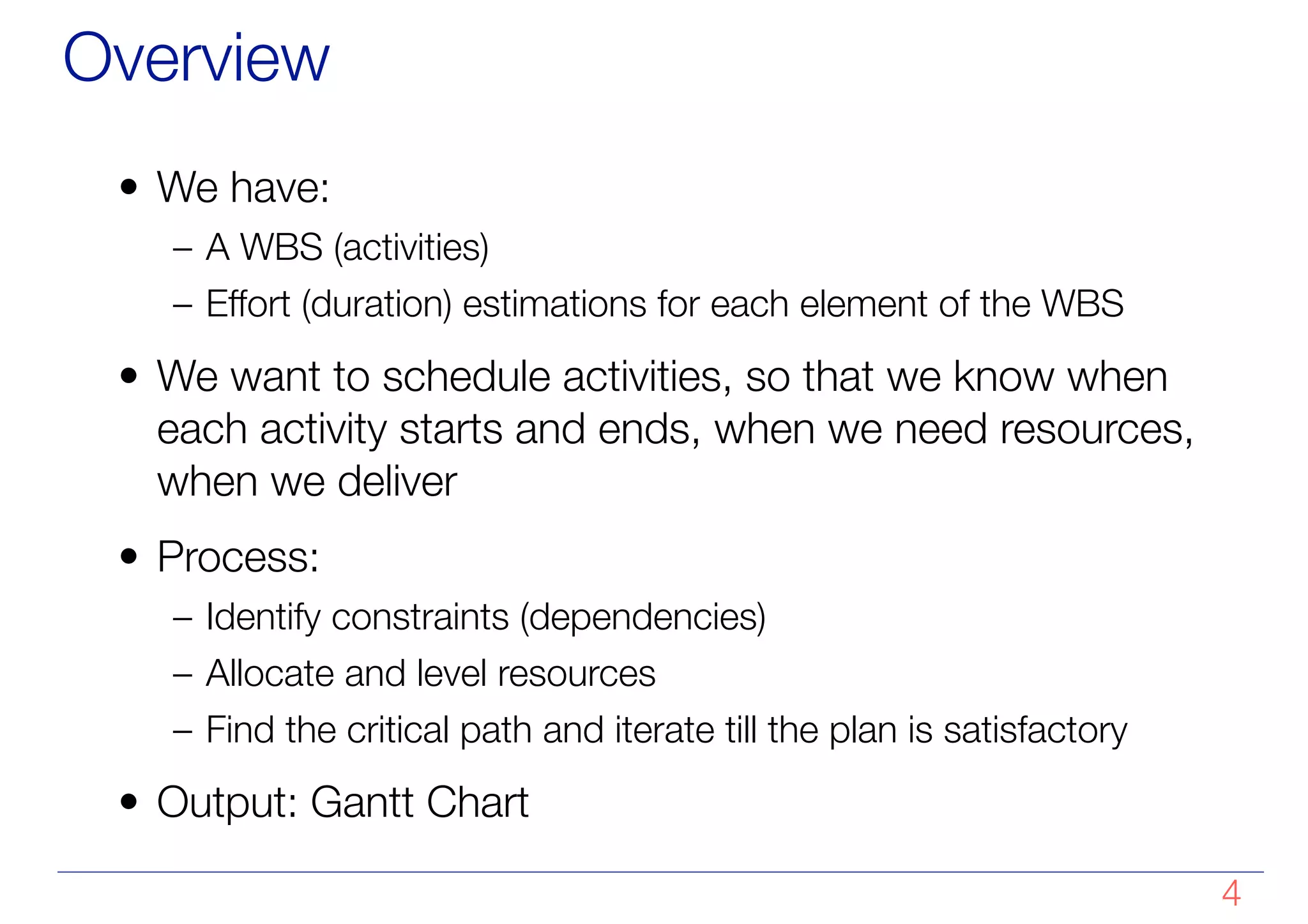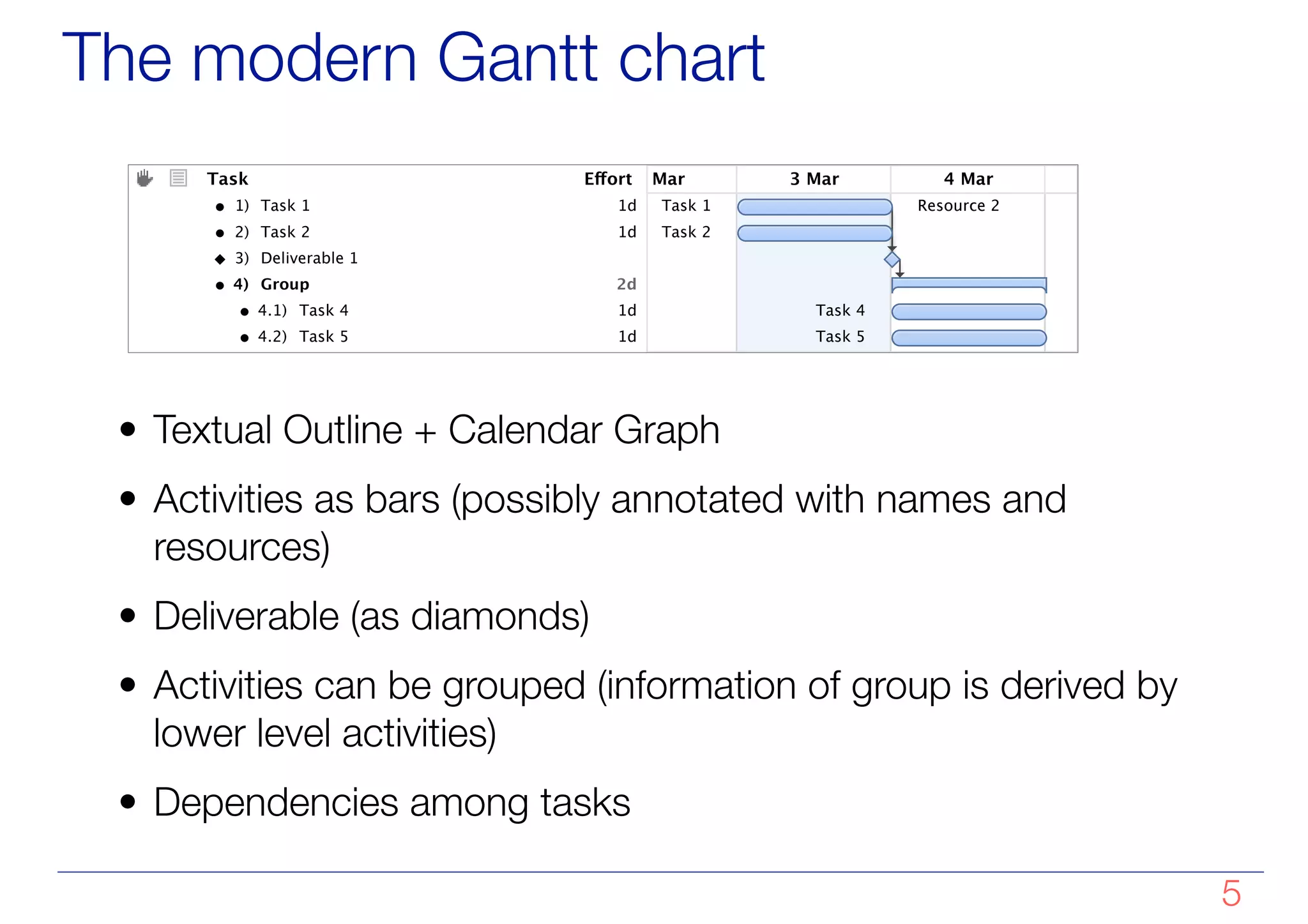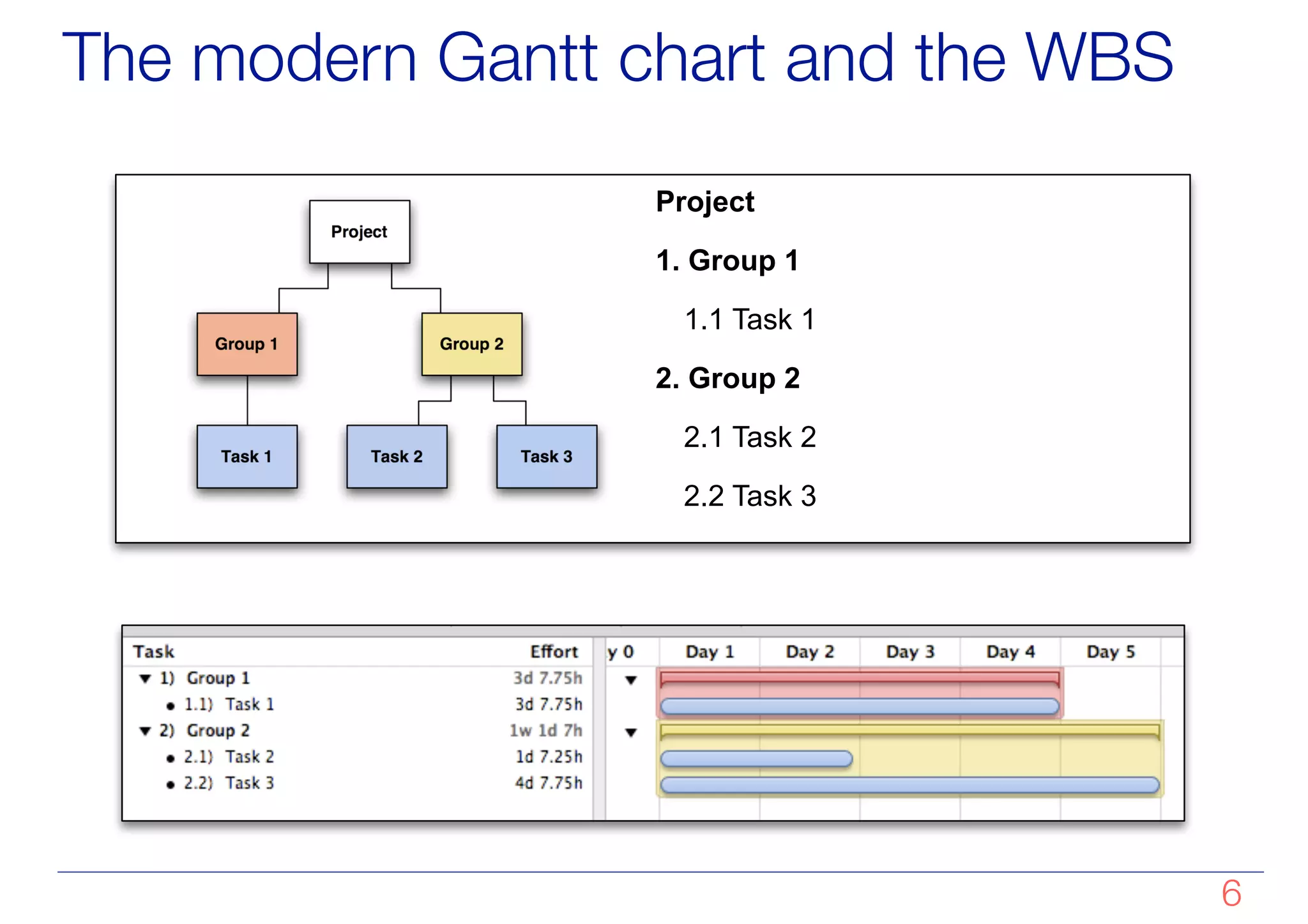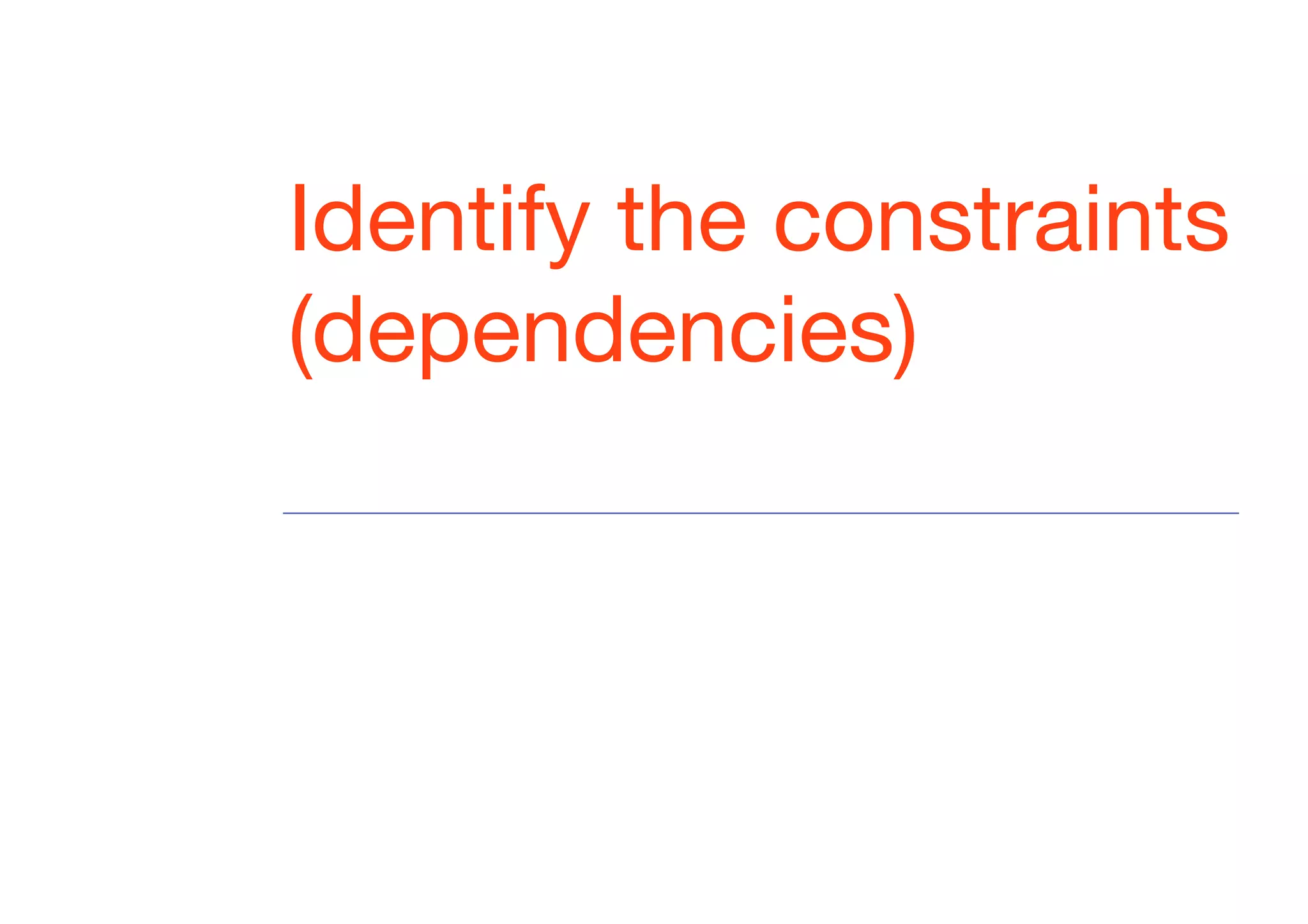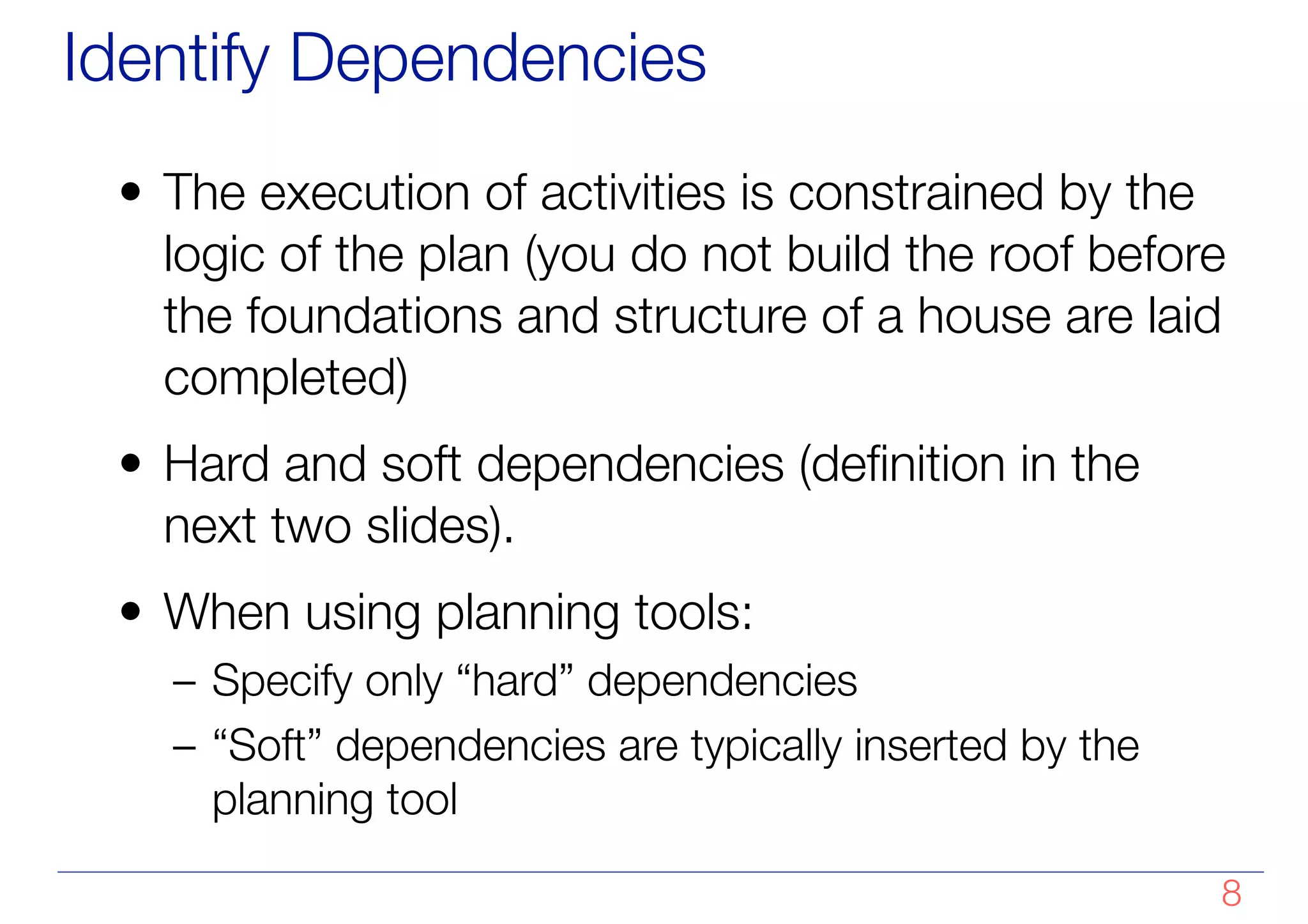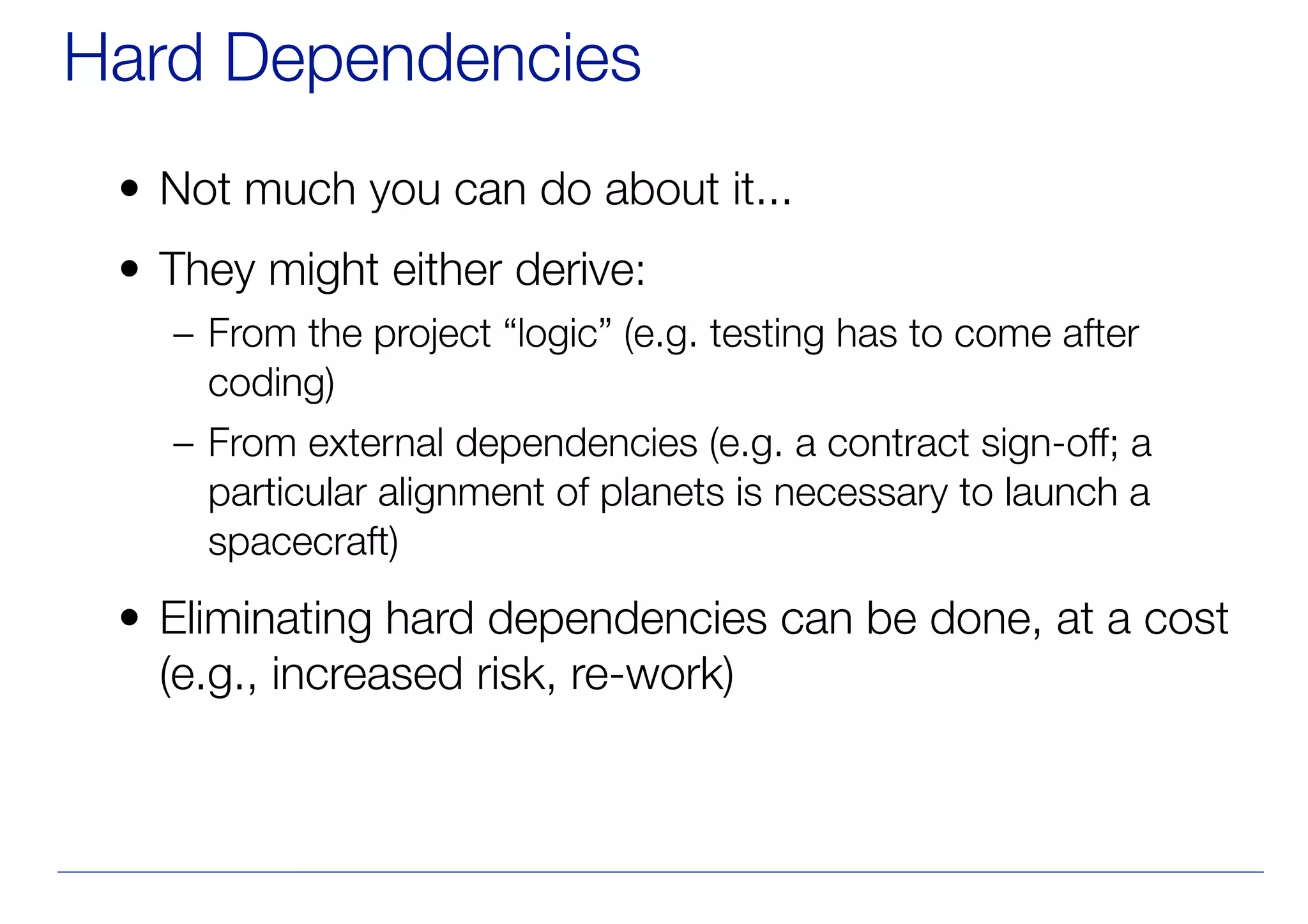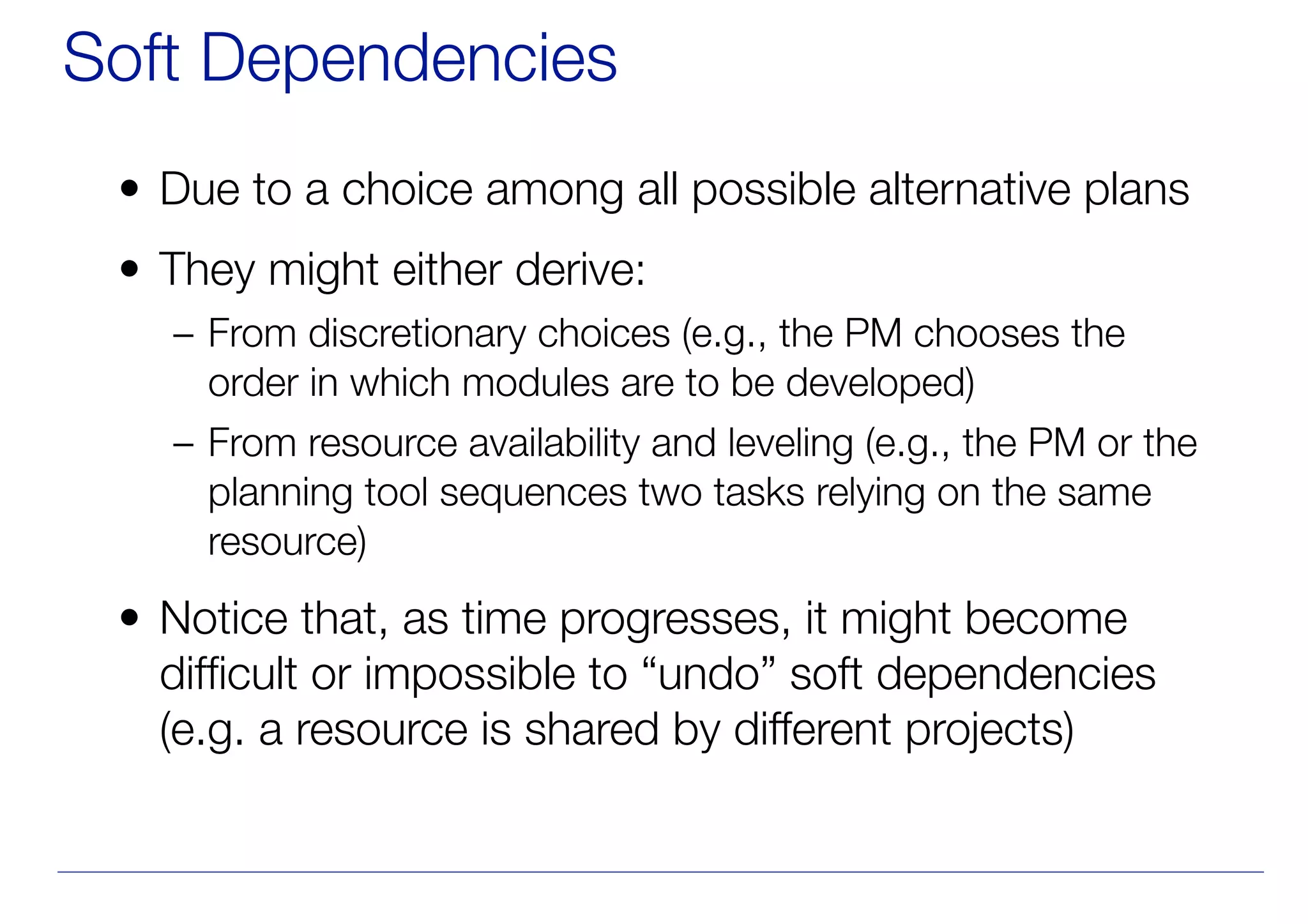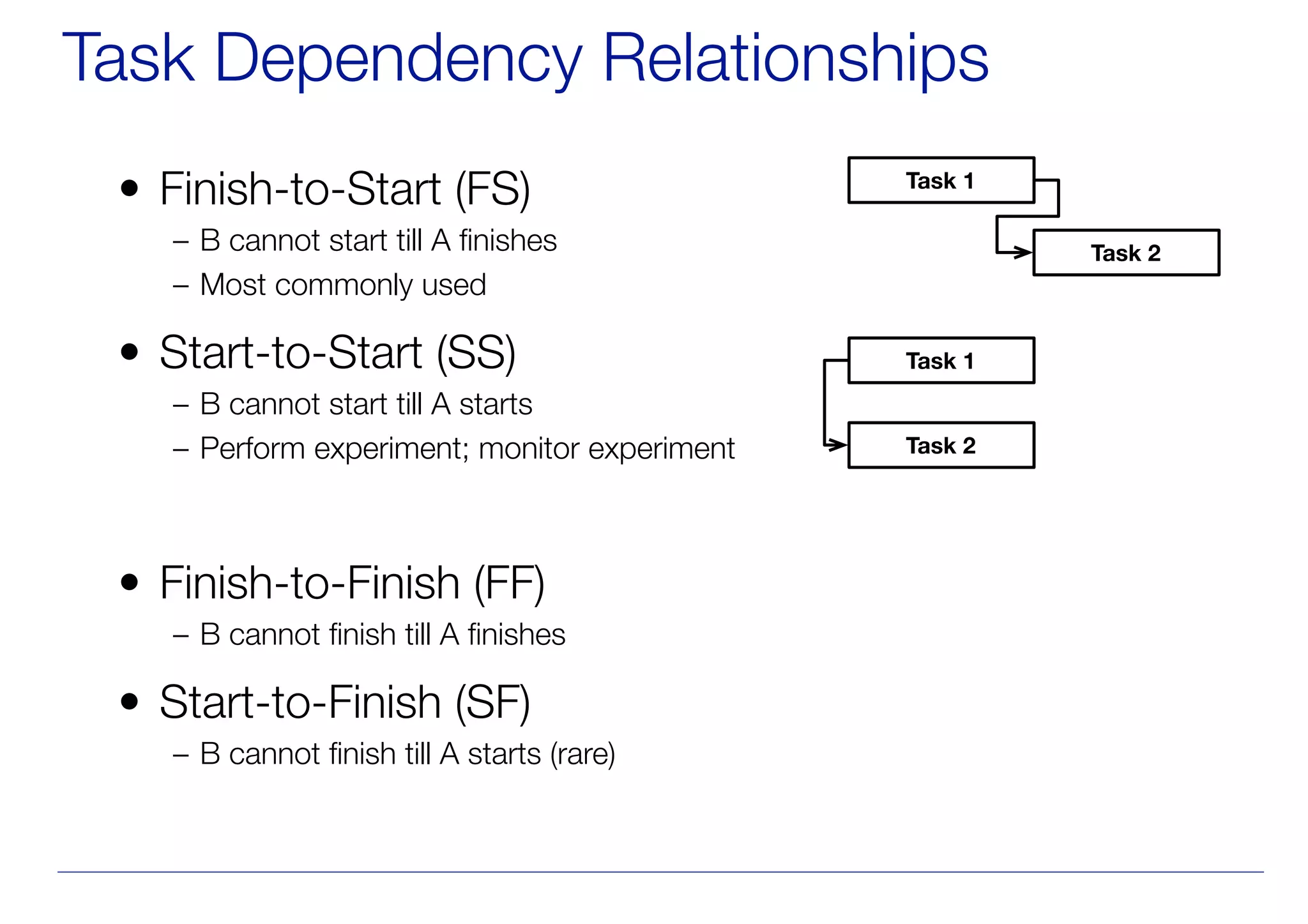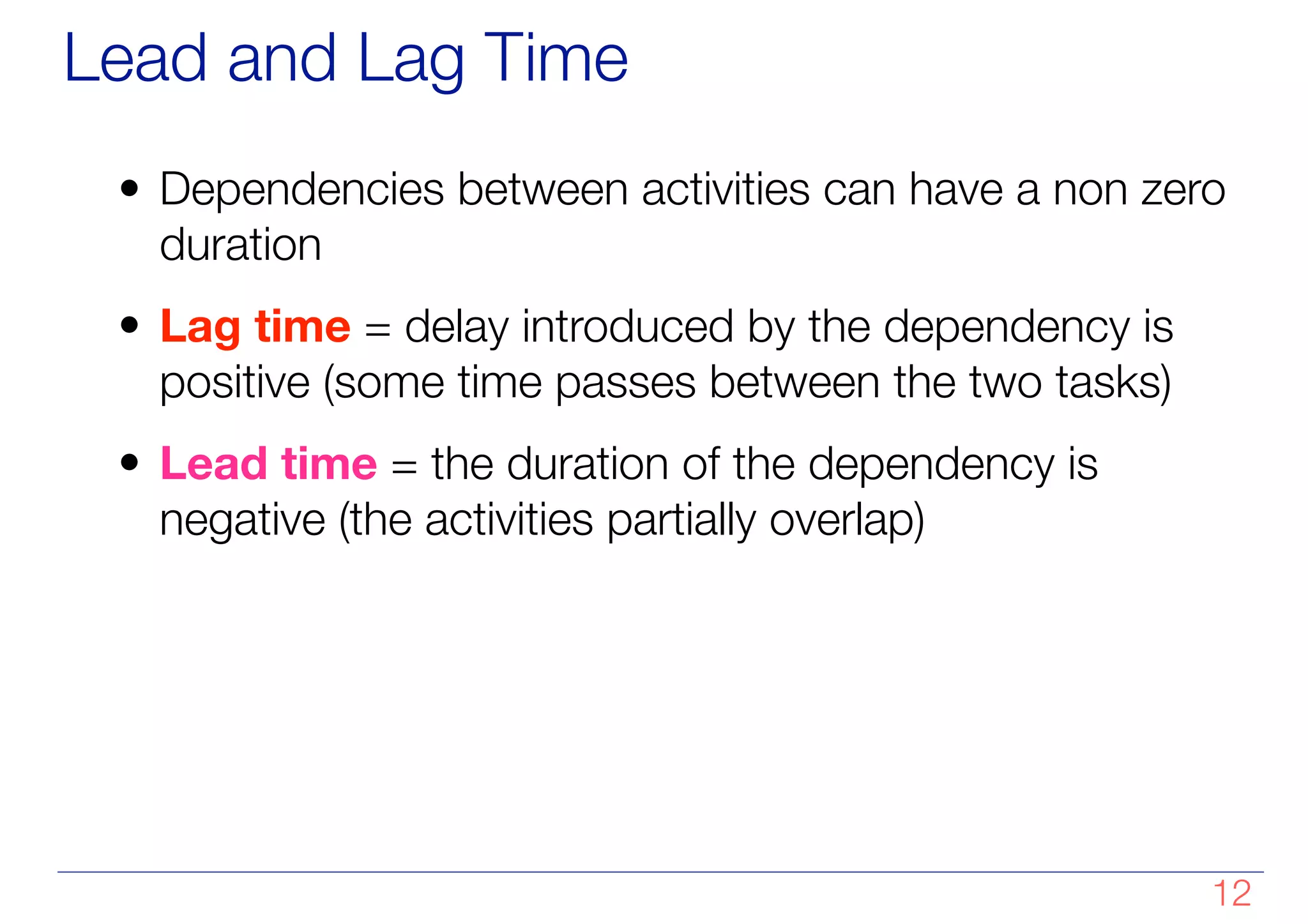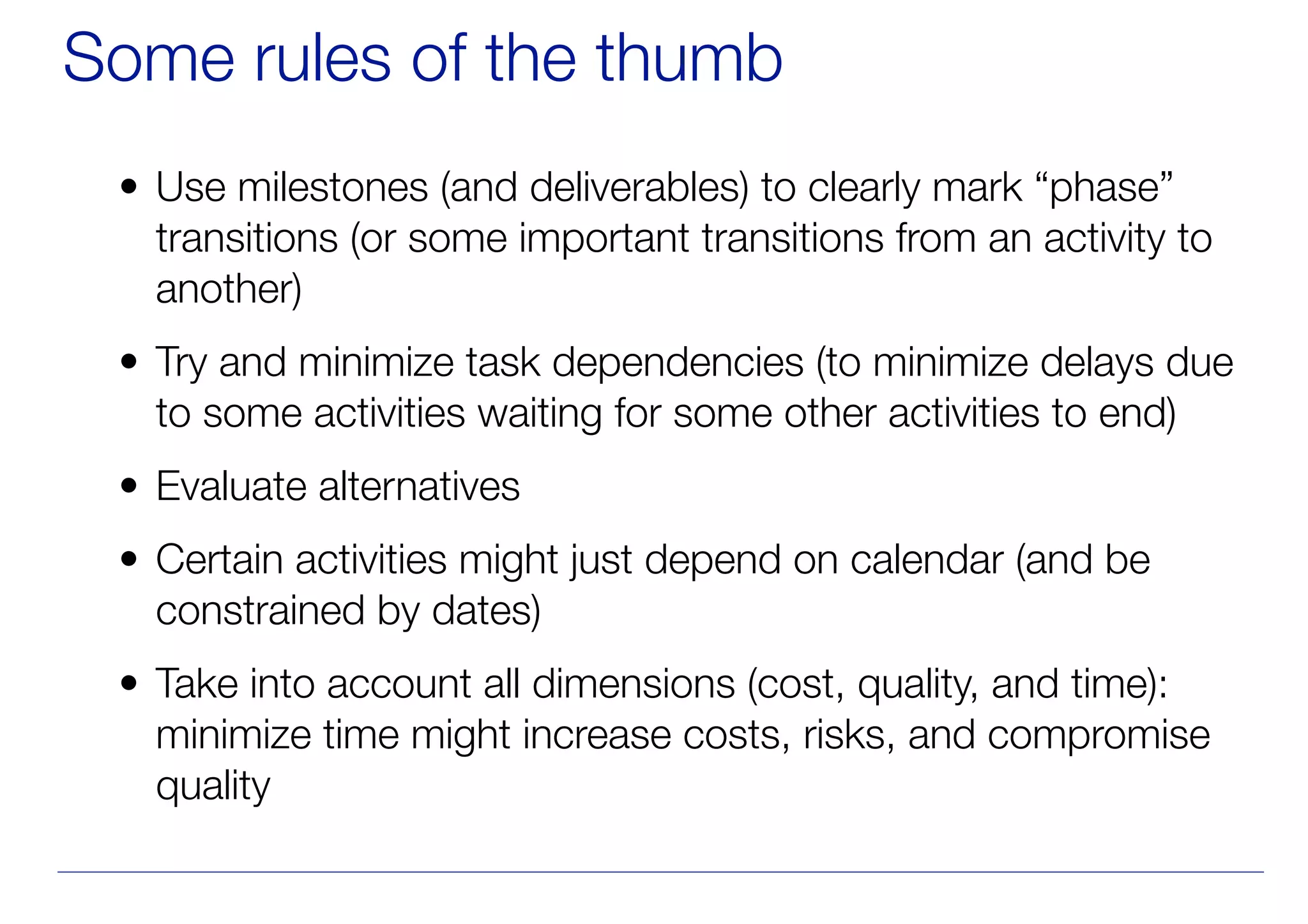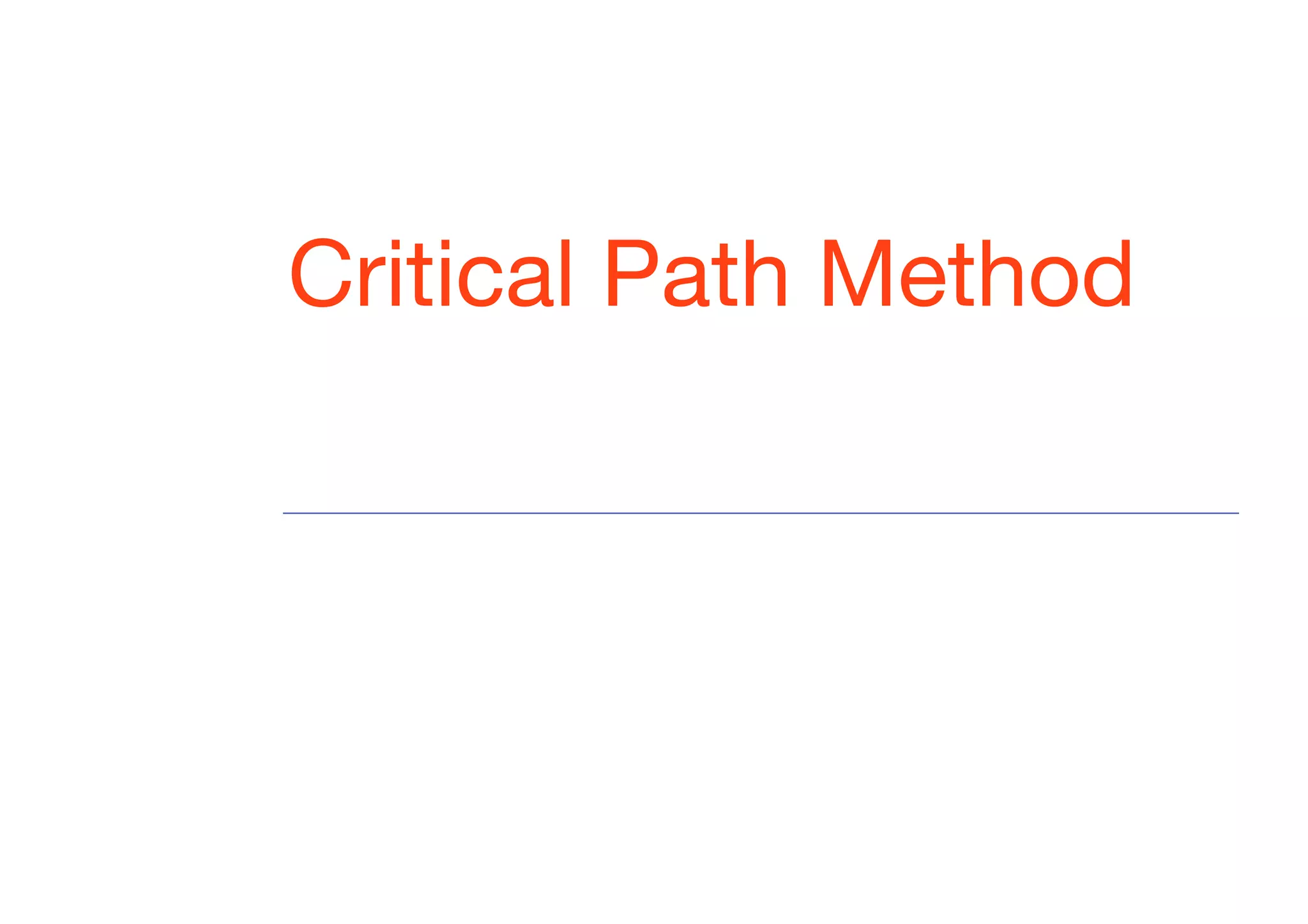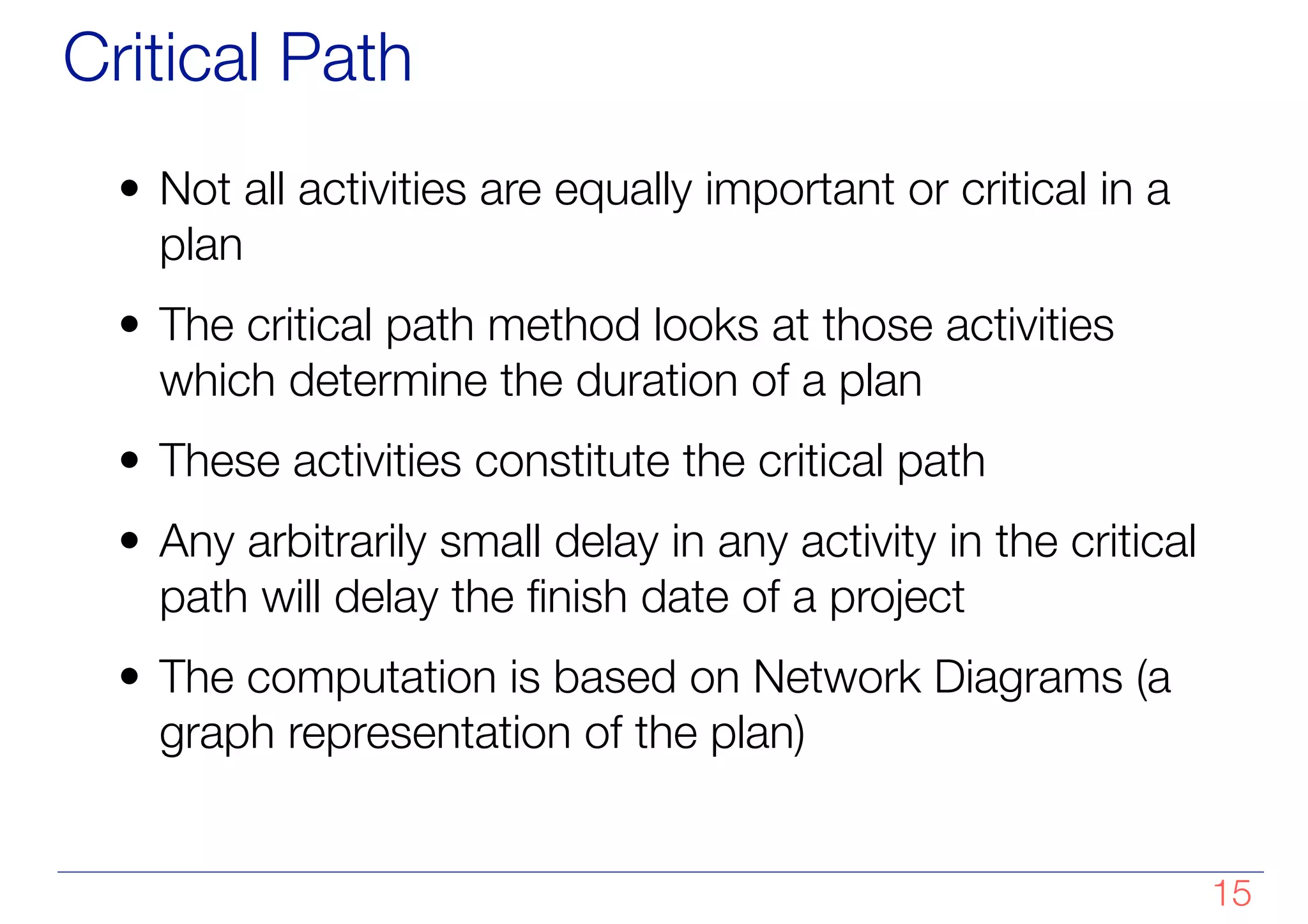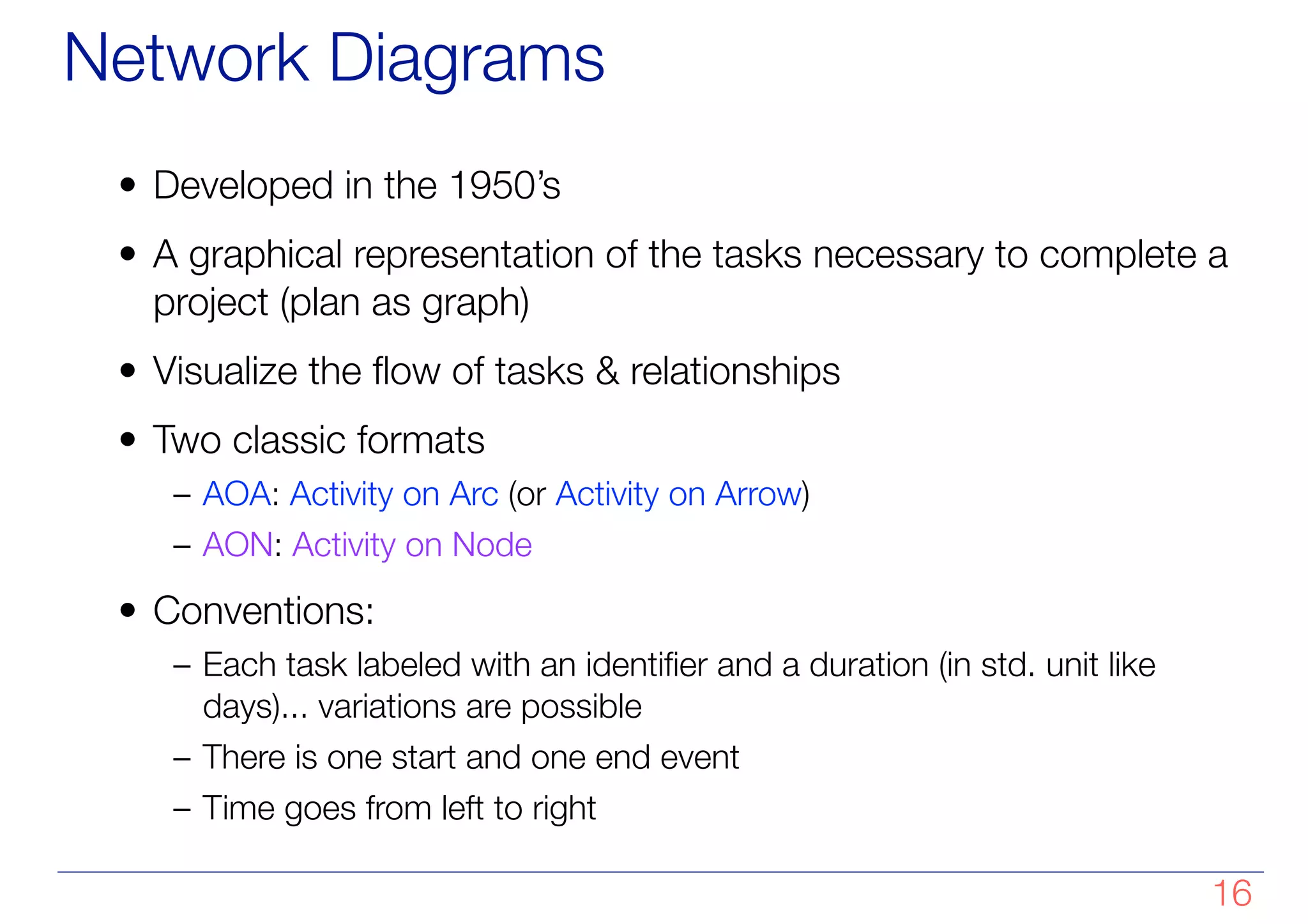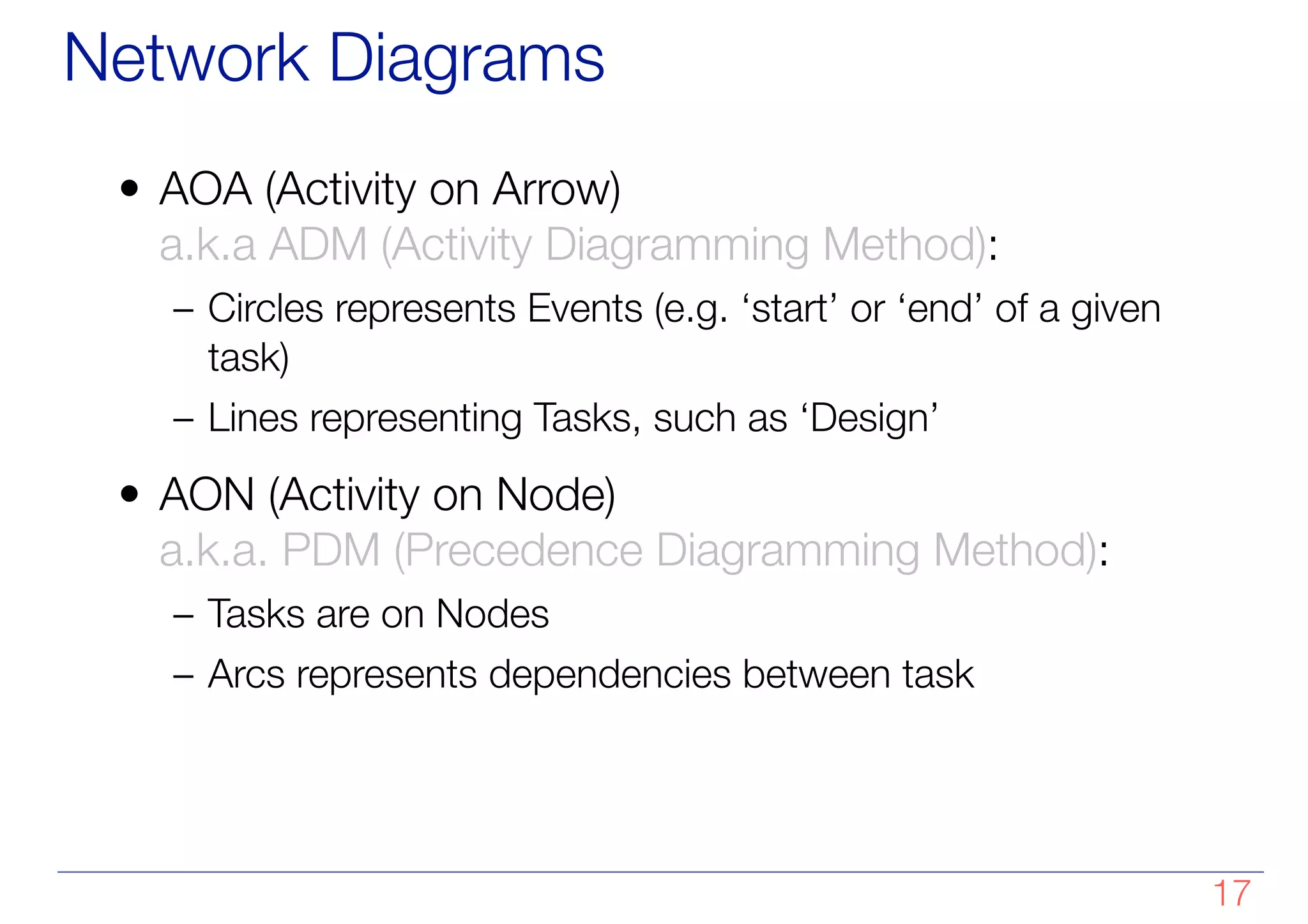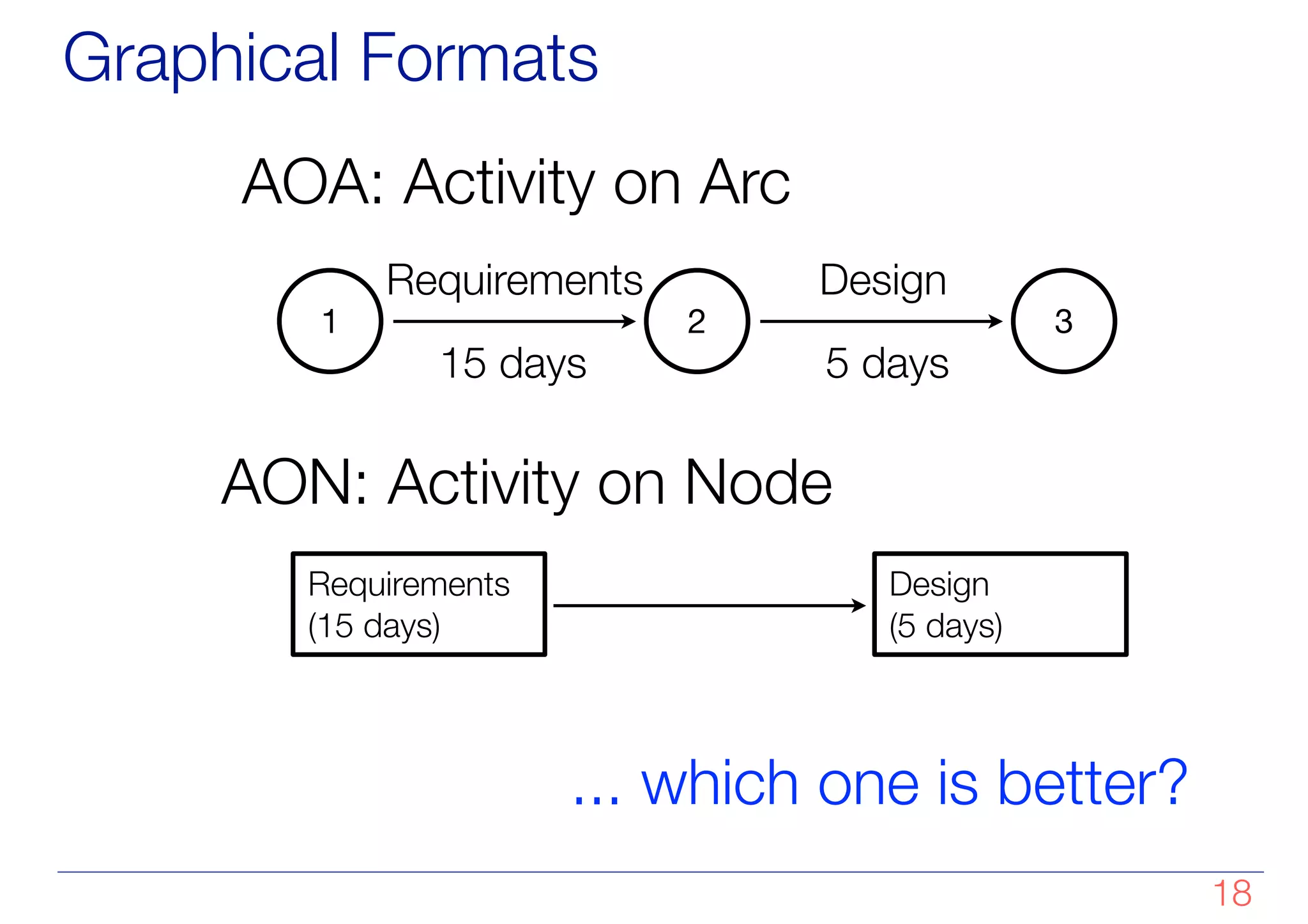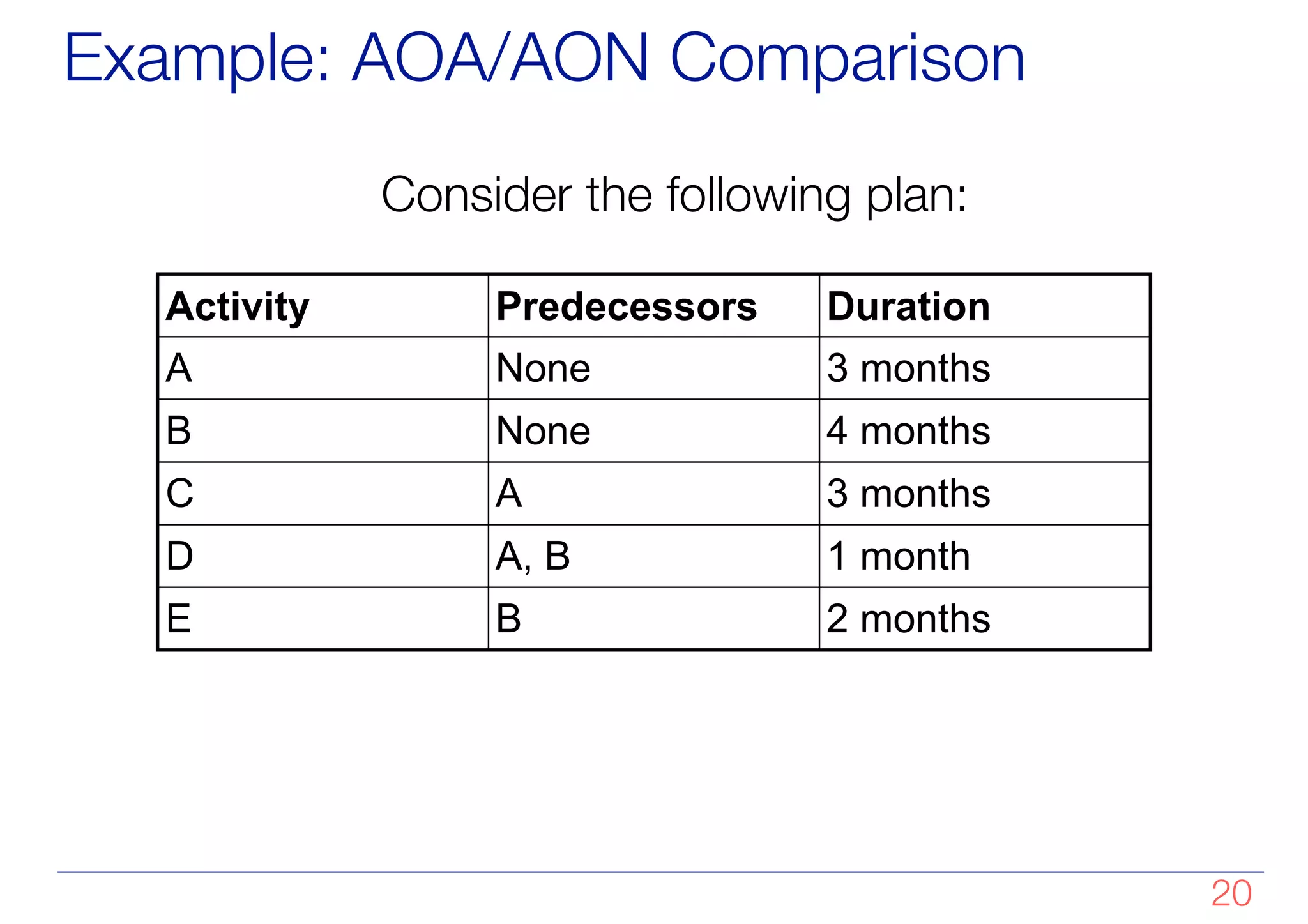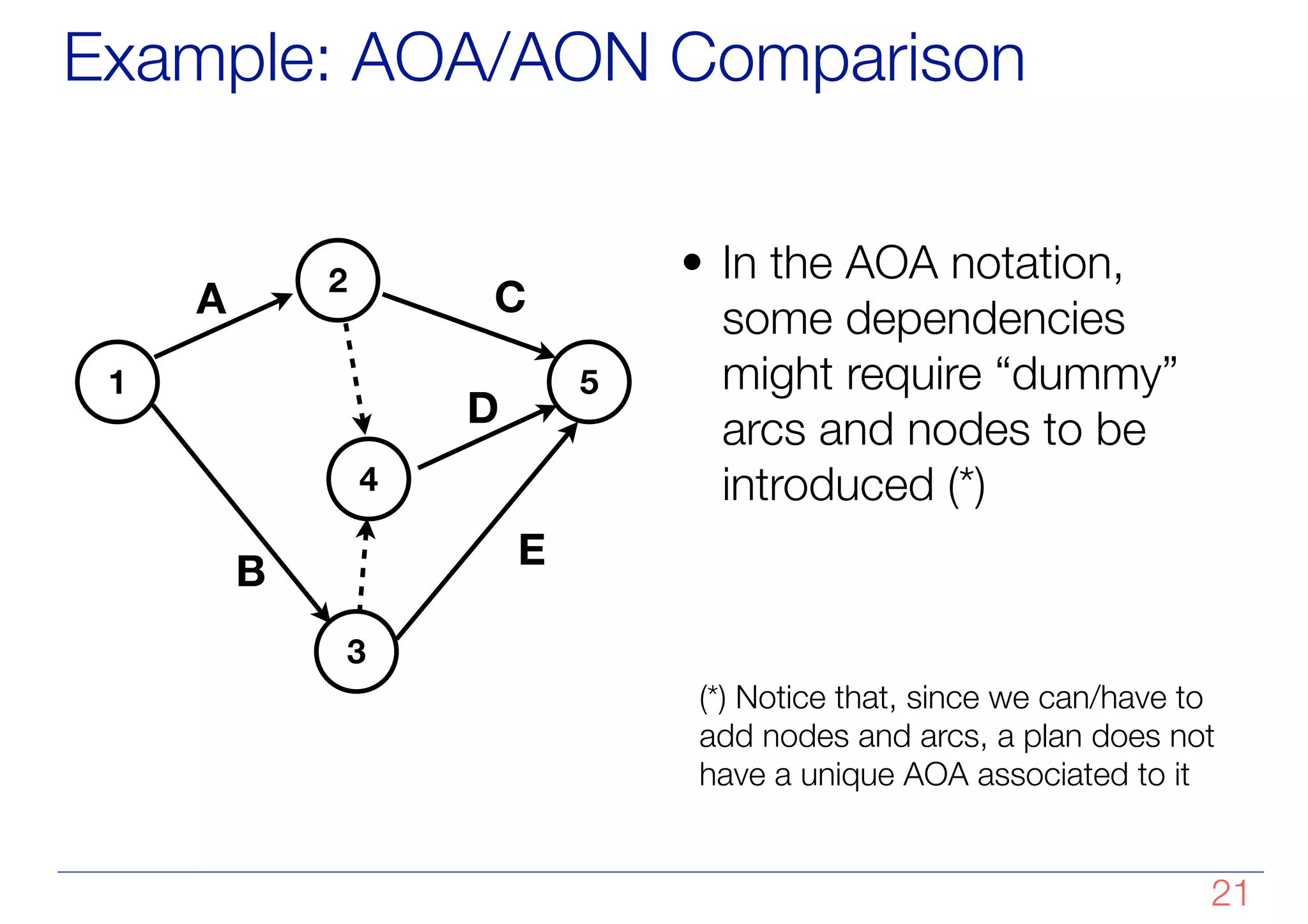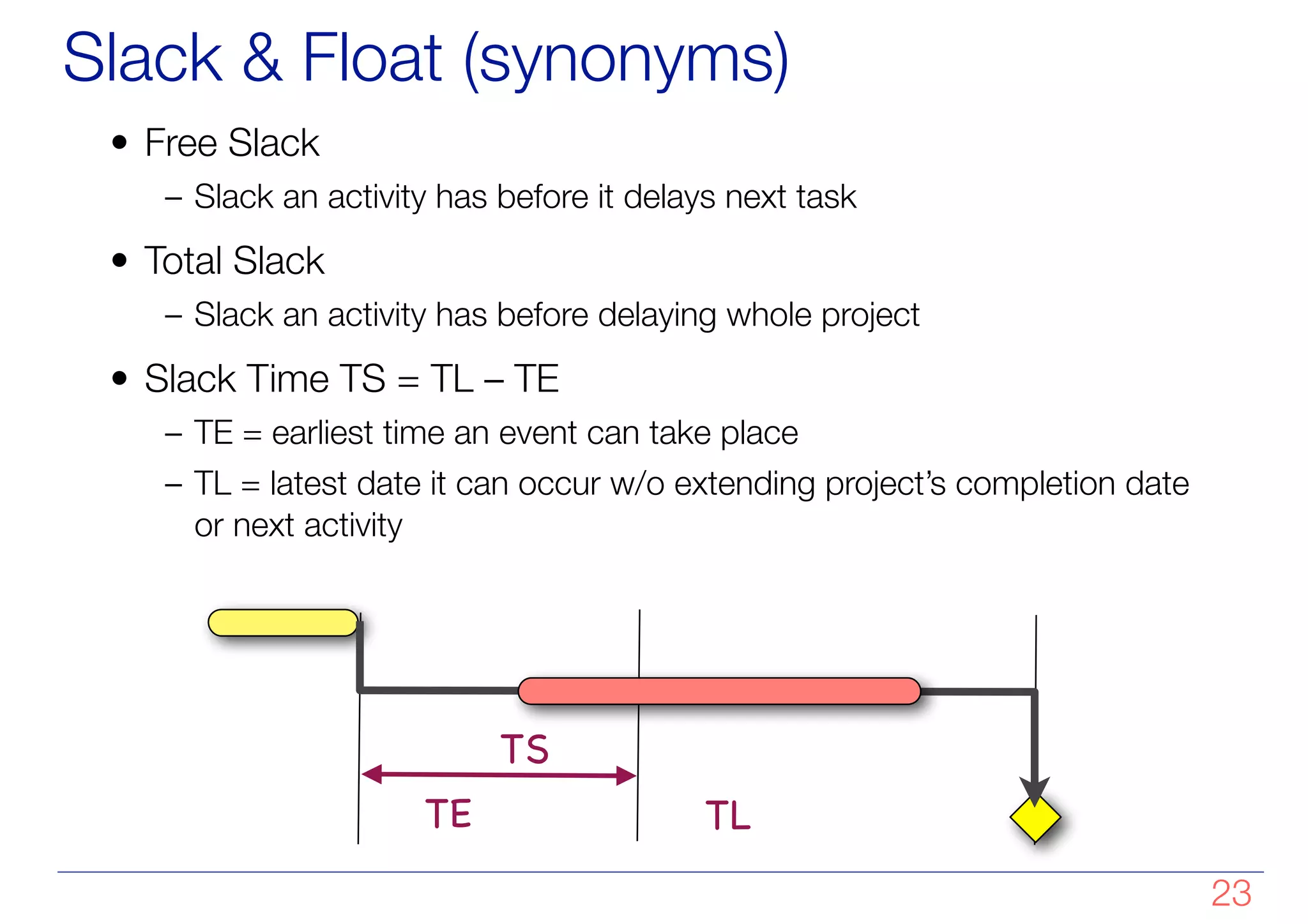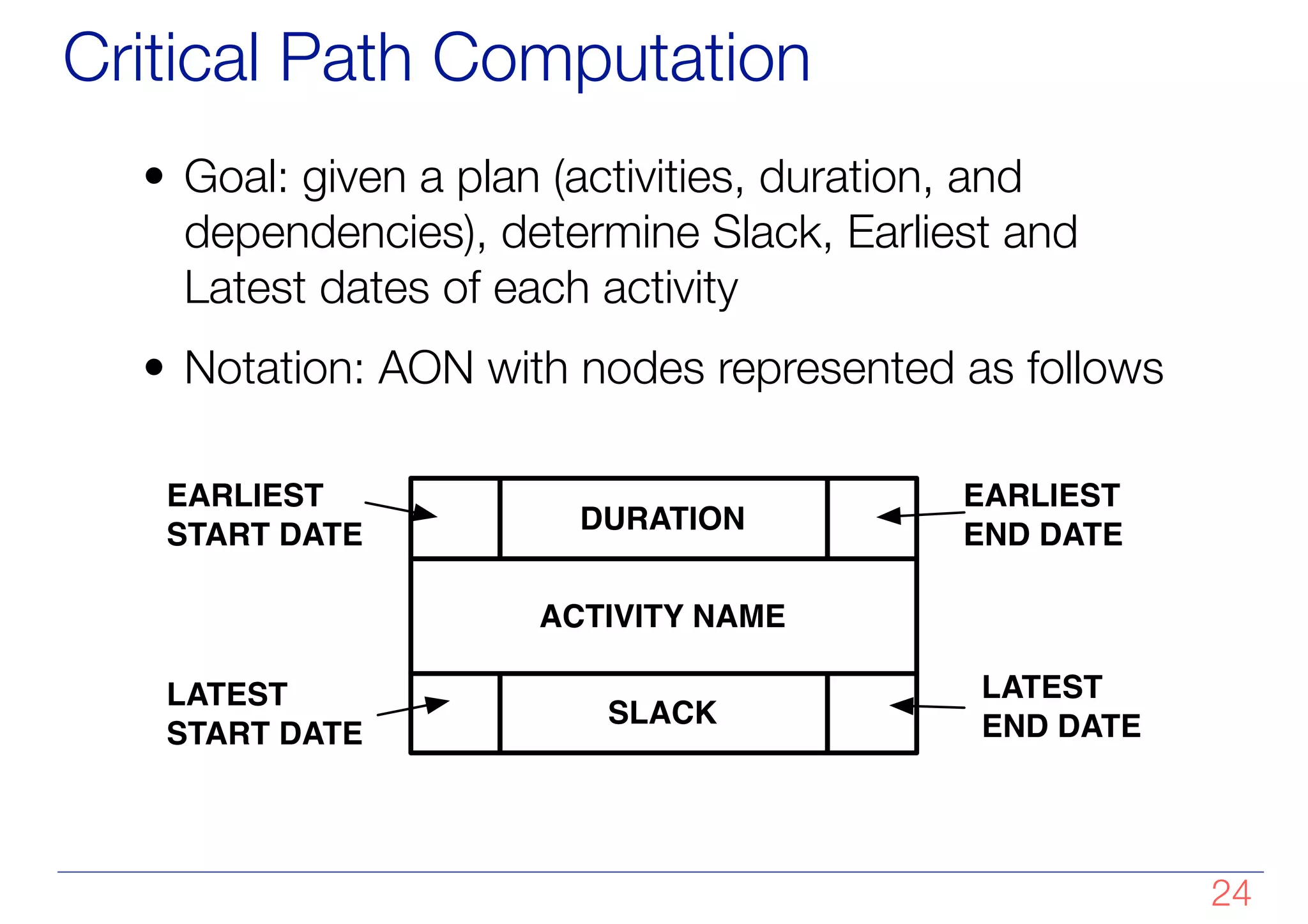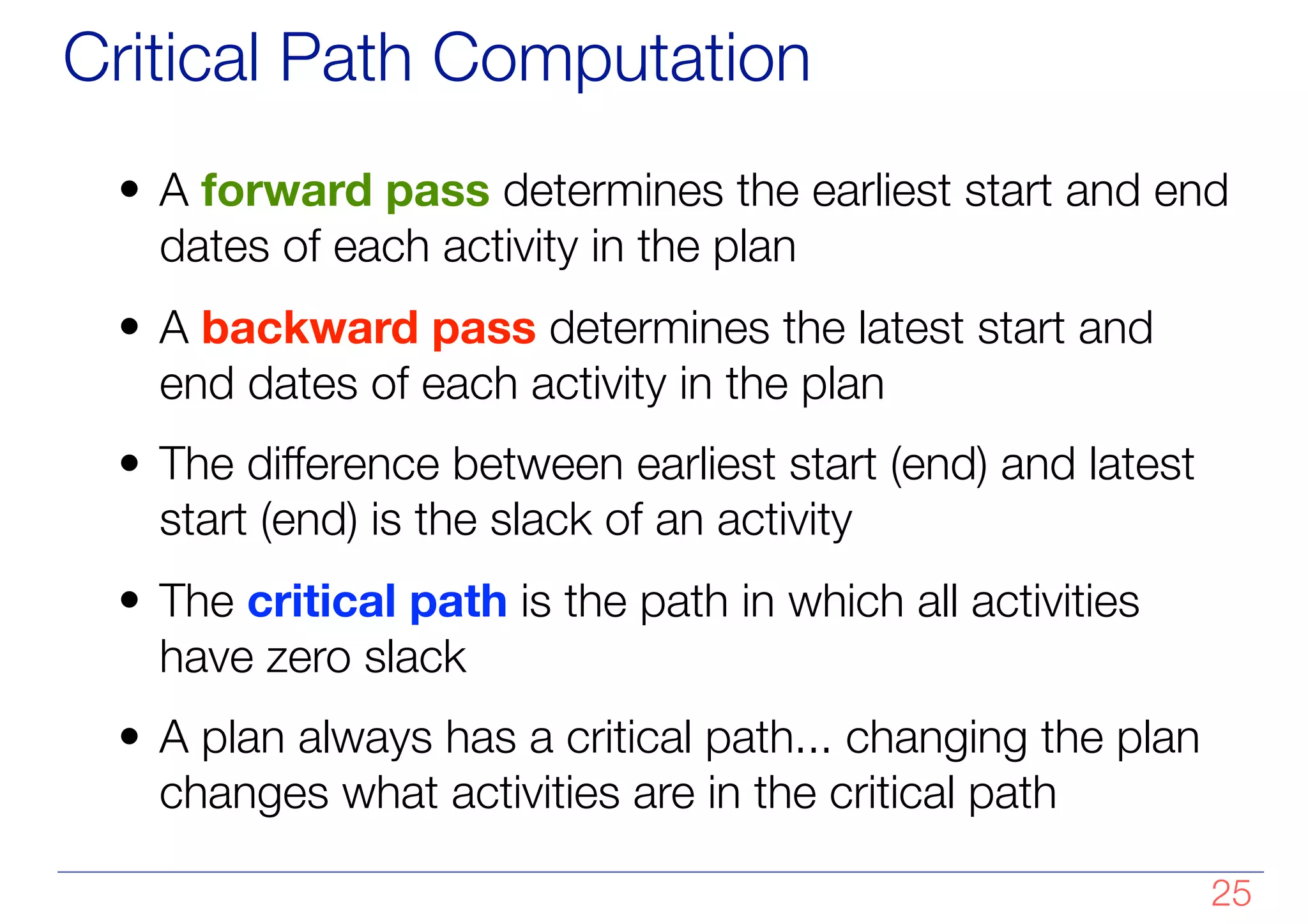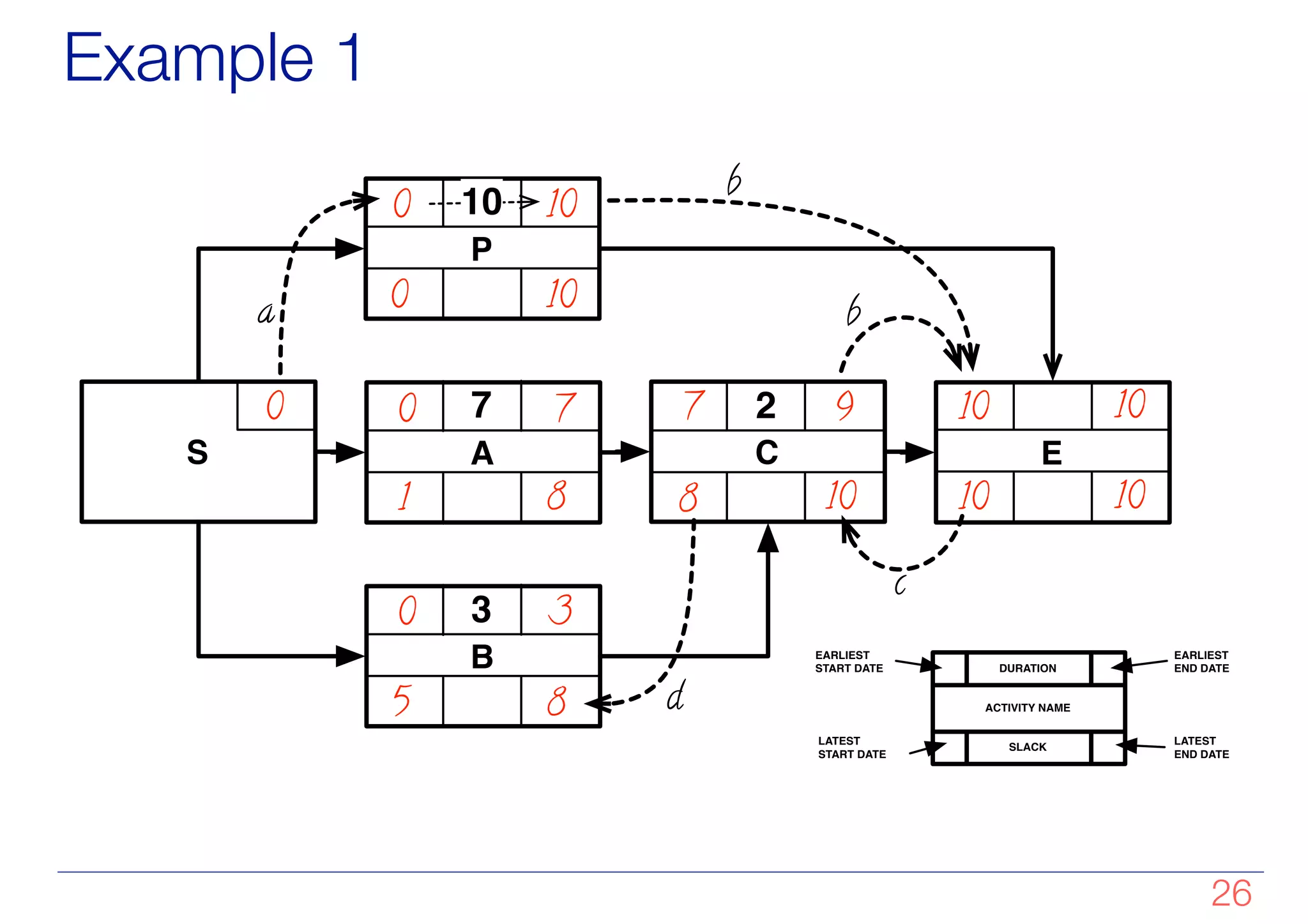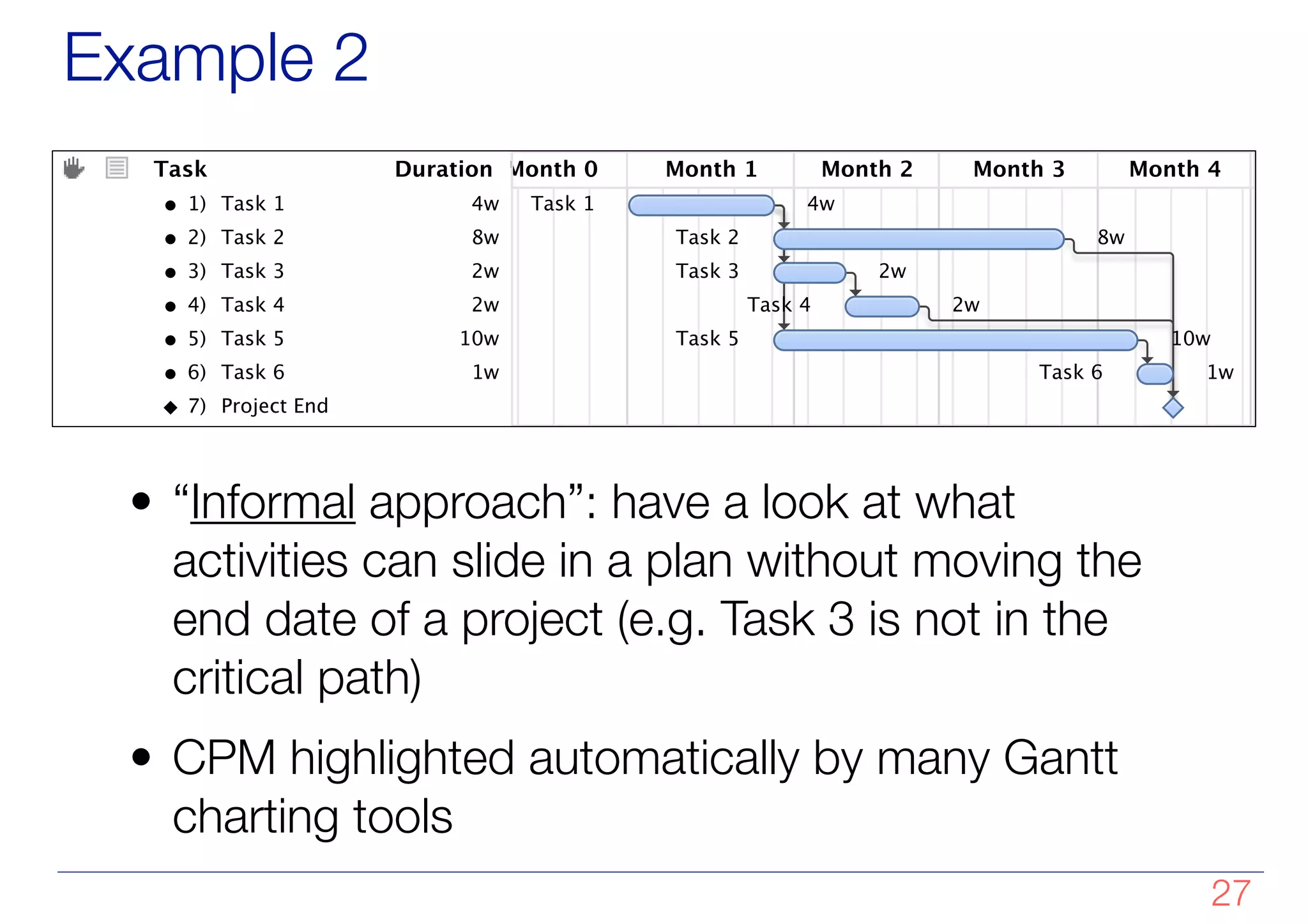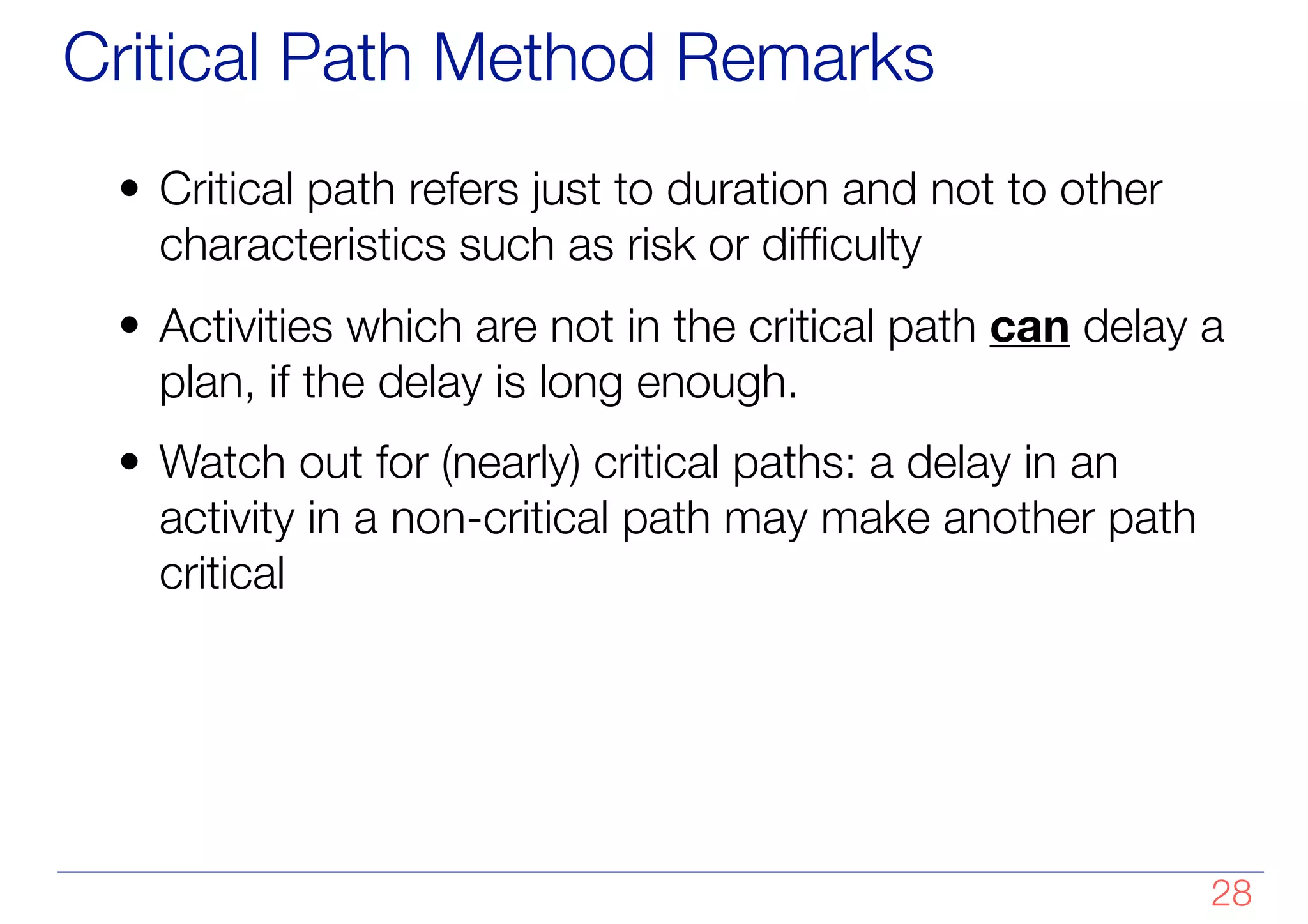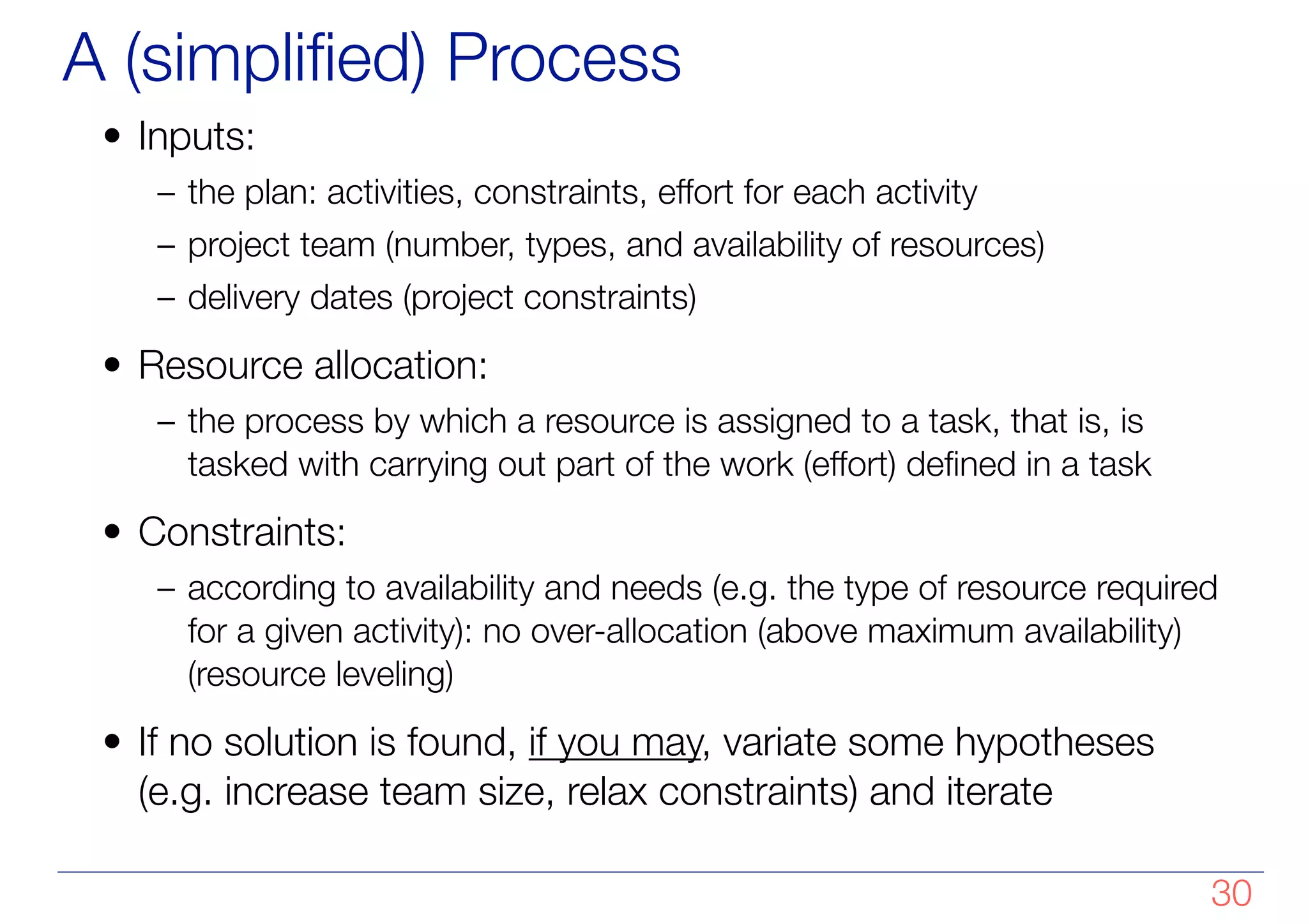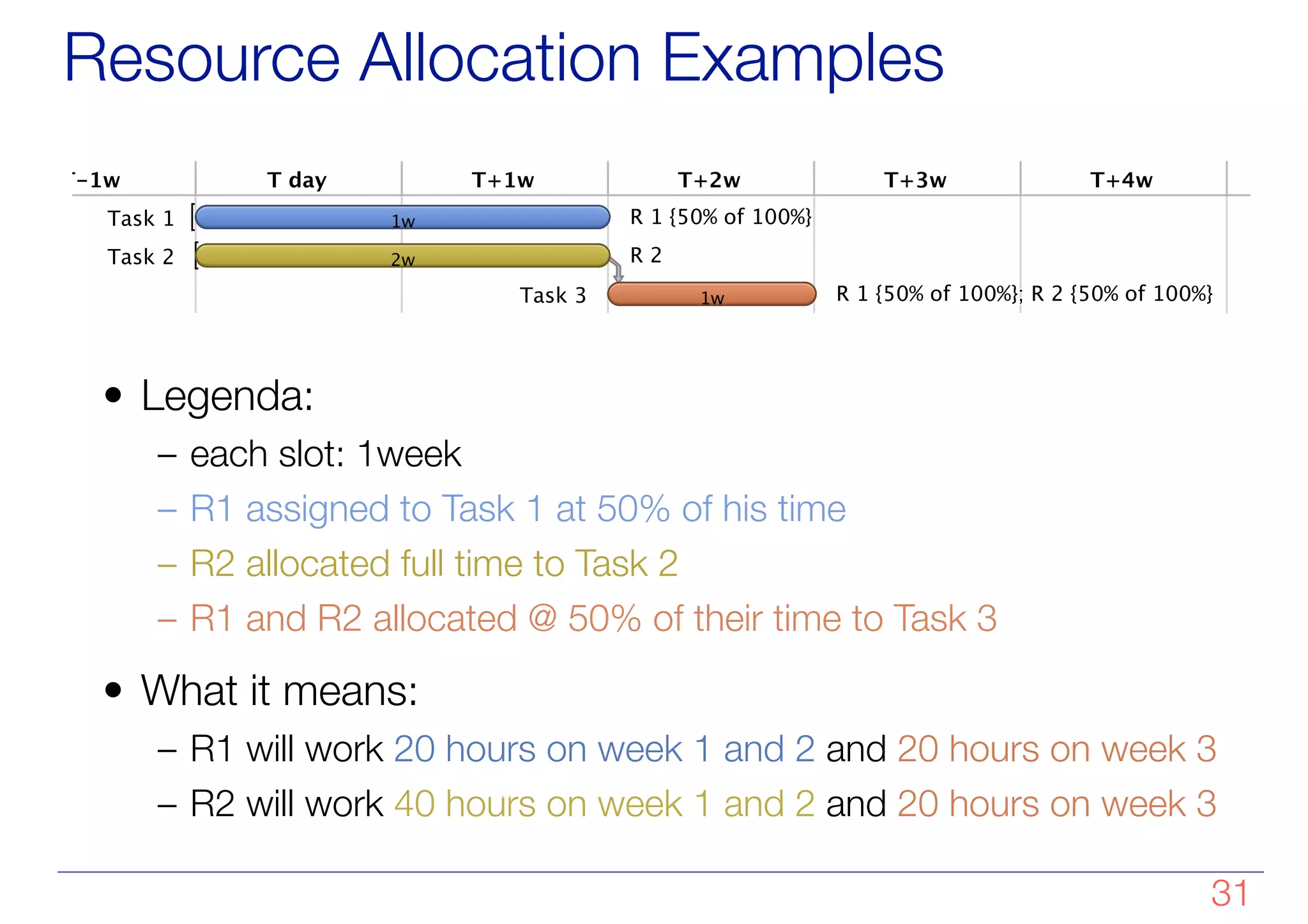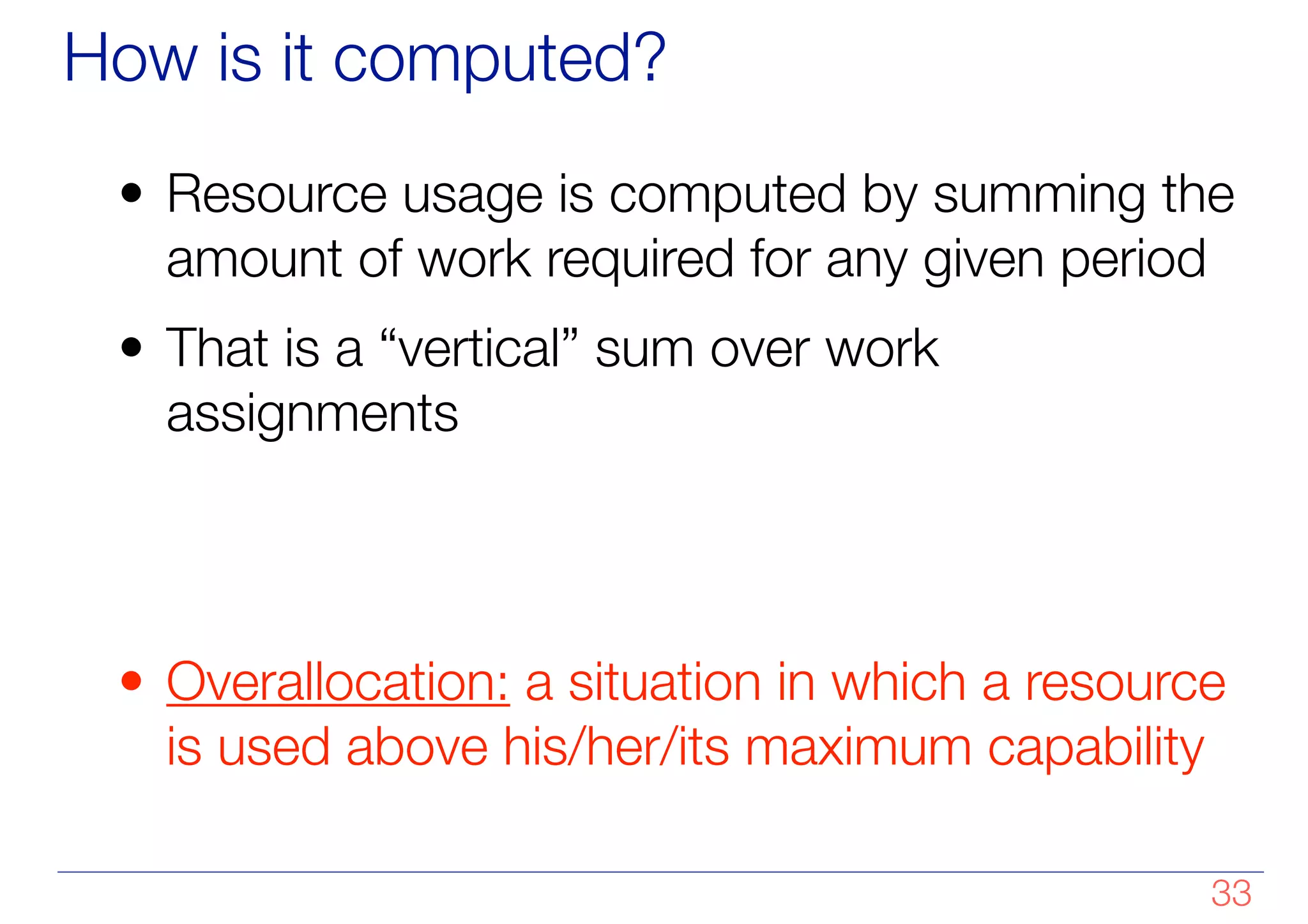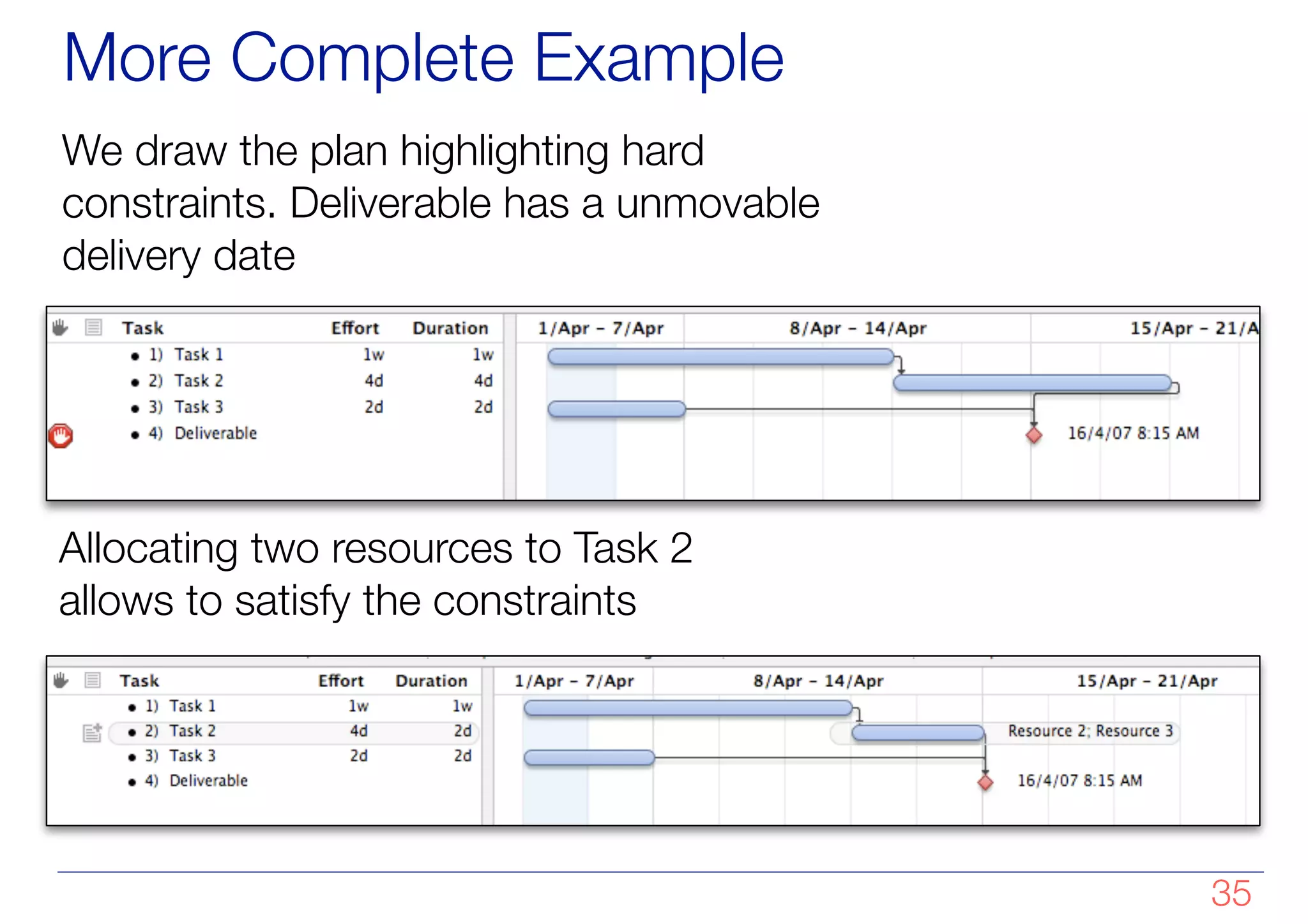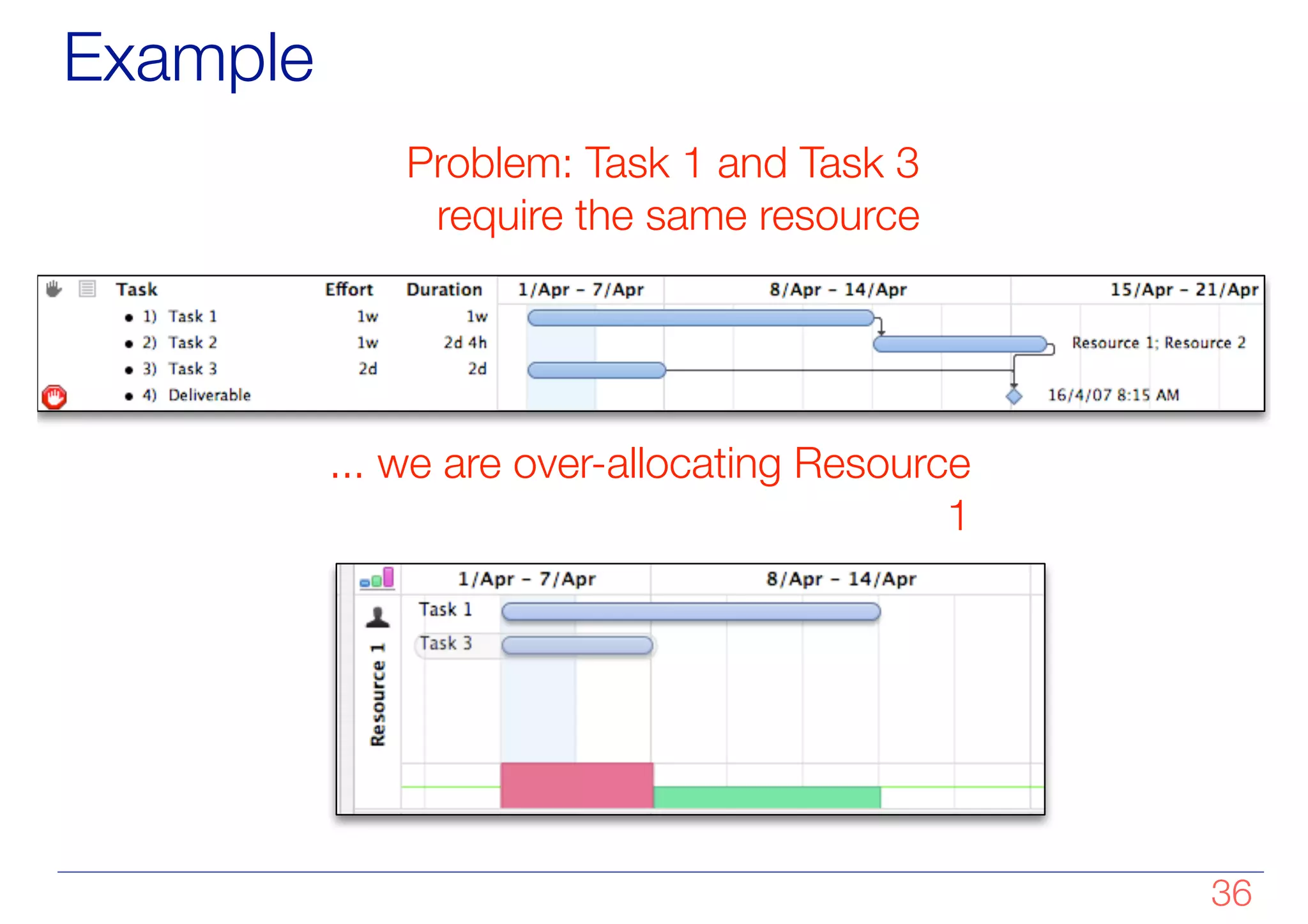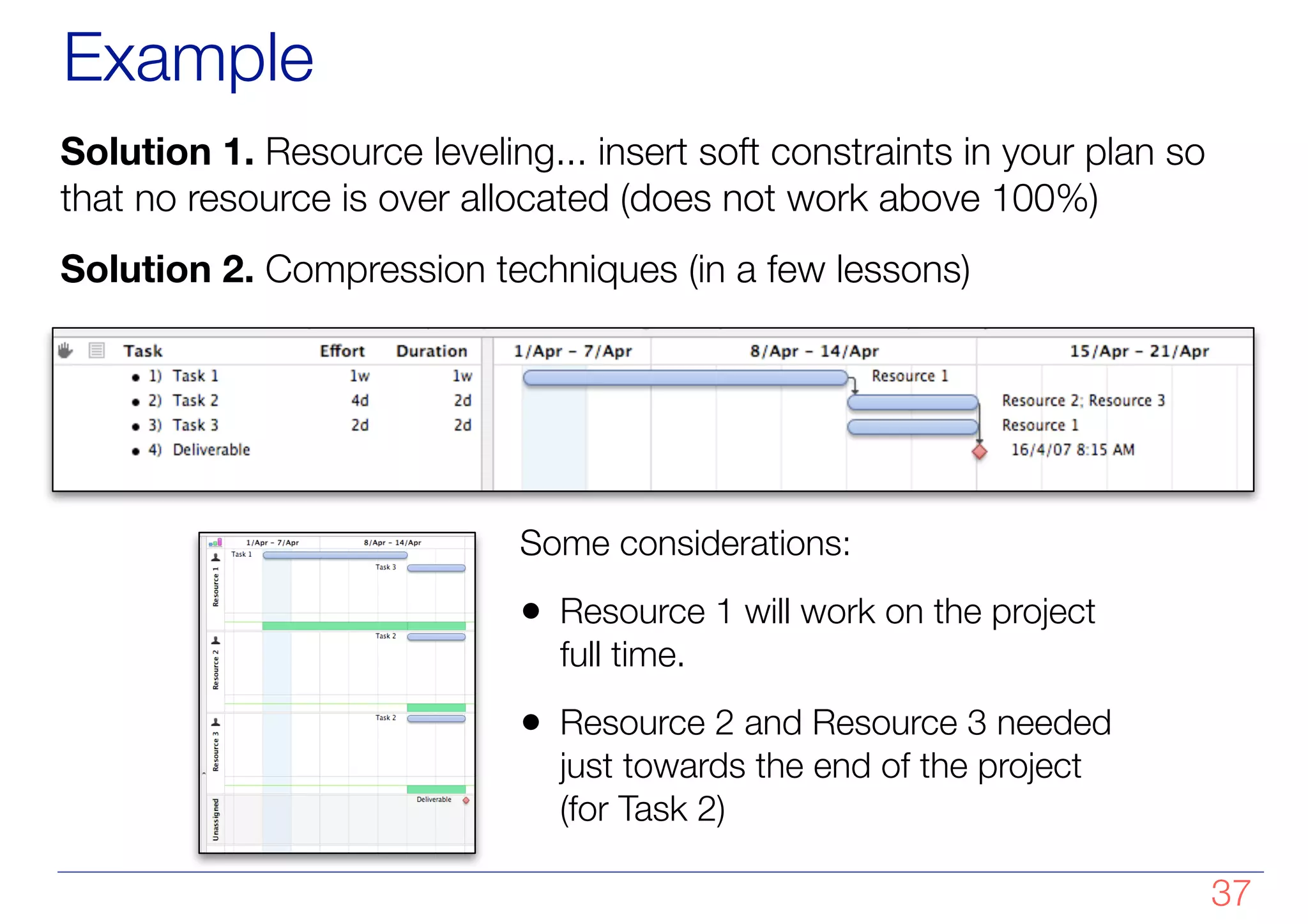The document discusses project scheduling and the critical path method for scheduling activities in a project. It aims to identify dependencies between activities, allocate resources to activities while avoiding overallocation, and determine the critical path. The critical path is the longest path of activities that determines the minimum project duration. It identifies activities with zero slack that cannot be delayed without delaying the entire project. The document provides examples of how to model a project as a network diagram, perform forward and backward passes to calculate earliest and latest start/finish dates, and identify the critical path and non-critical path activities. It also discusses how to allocate resources to activities and level resources to avoid overallocation.

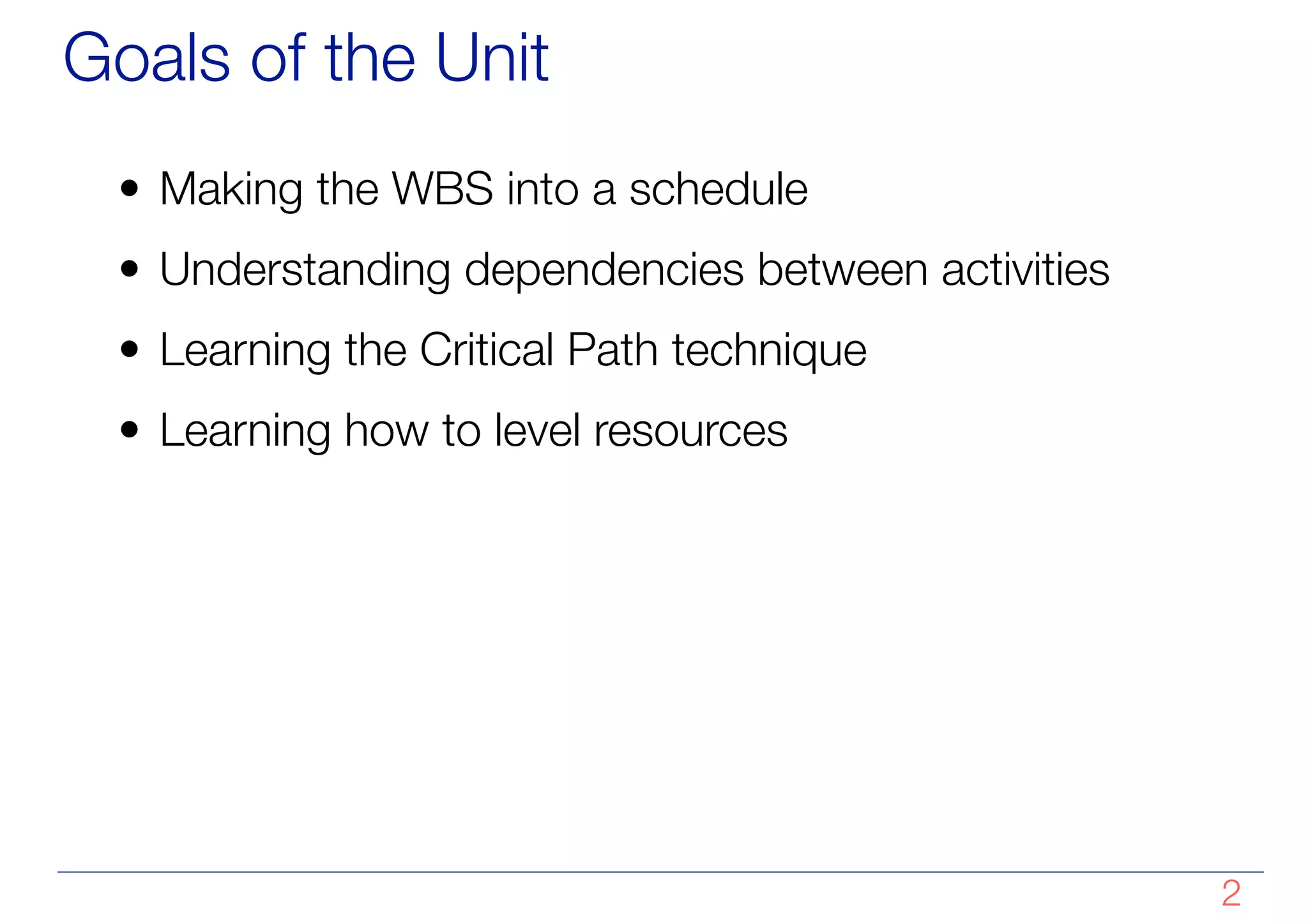
![Initiate Plan Execute &
Monitor
Close
Develop
Monitor
Goals,
Cost
and
Schedule
Release
Change Control & Configuration Management
Quality Management
Human Resource Management
Kick Off
Activities
Formalize
Goals
Define
Schedule
Define Costs
Assess
Feasibility
Close
Collect
Outputs
[Obtain
Approval]
Risk Management](https://image.slidesharecdn.com/c03-221228011809-dcea84ce/75/C03-05-Scheduling-key-pdf-3-2048.jpg)
